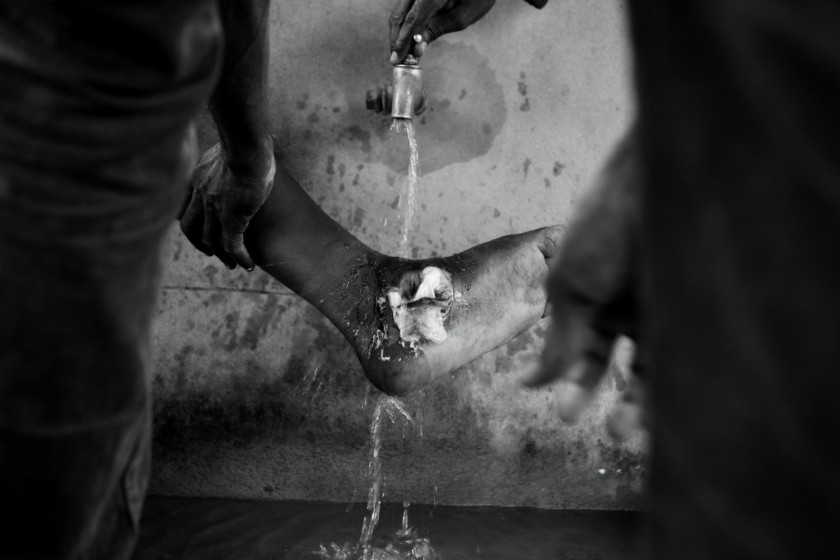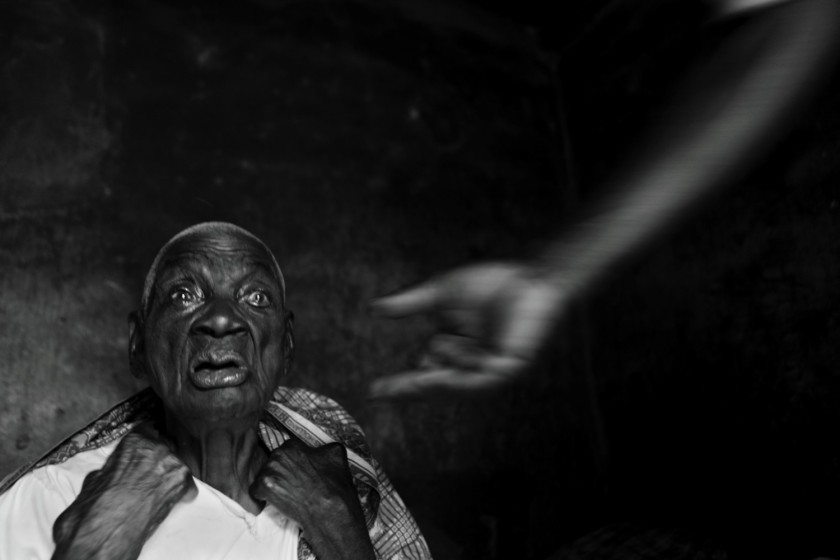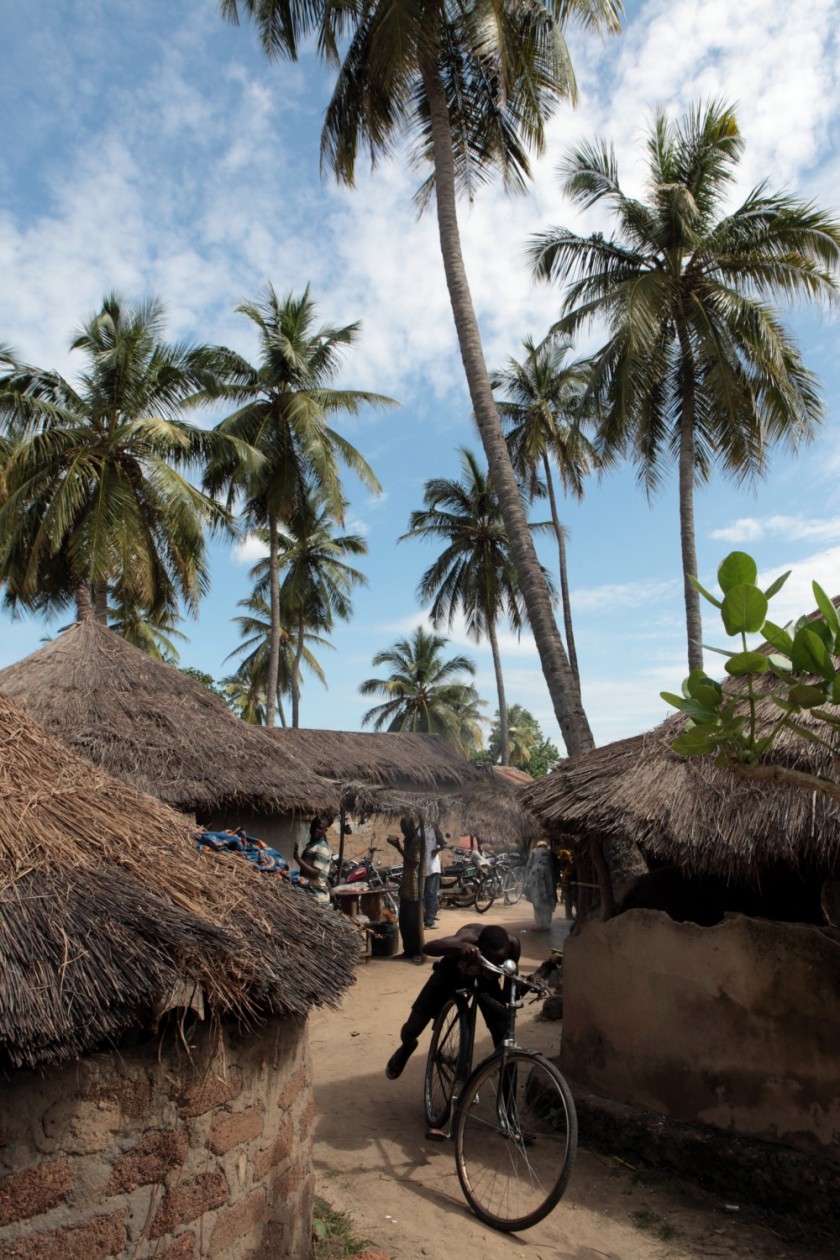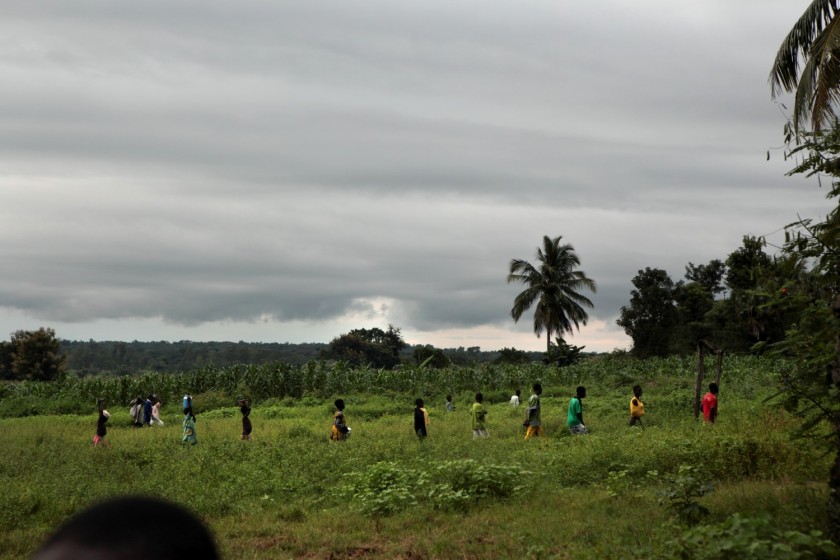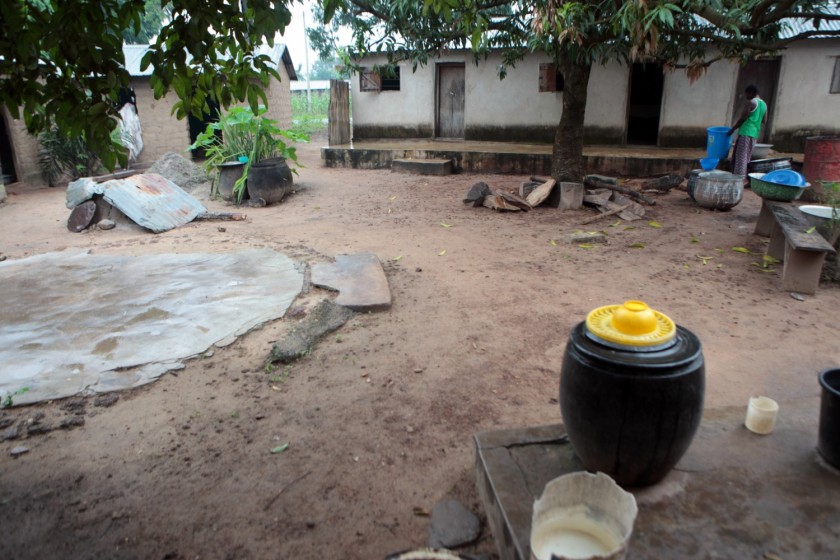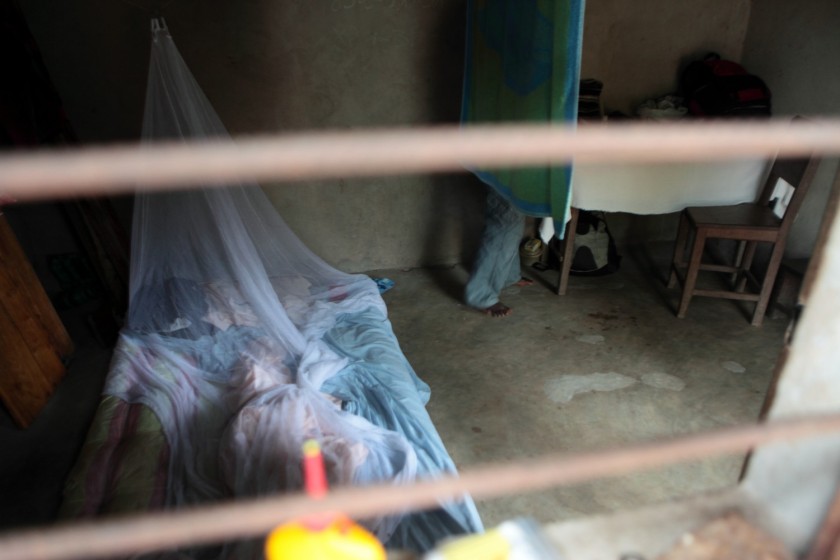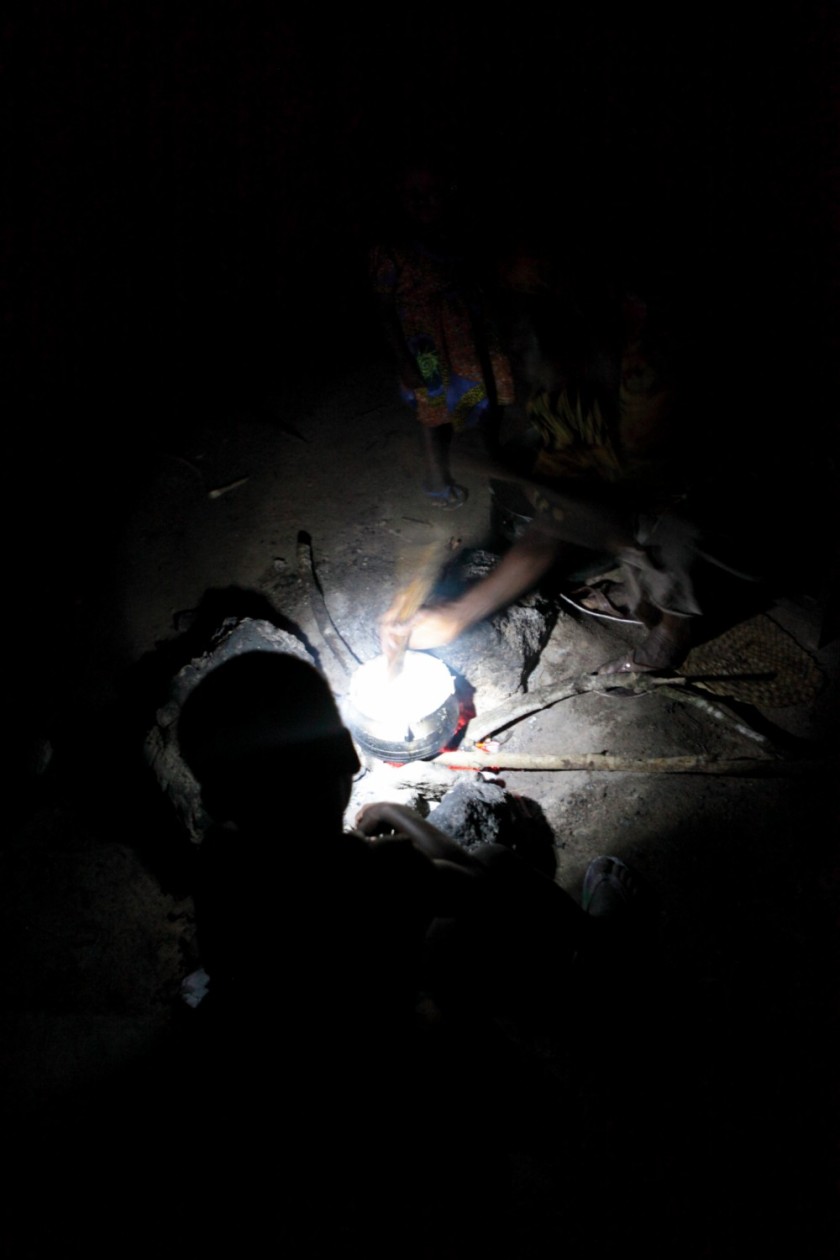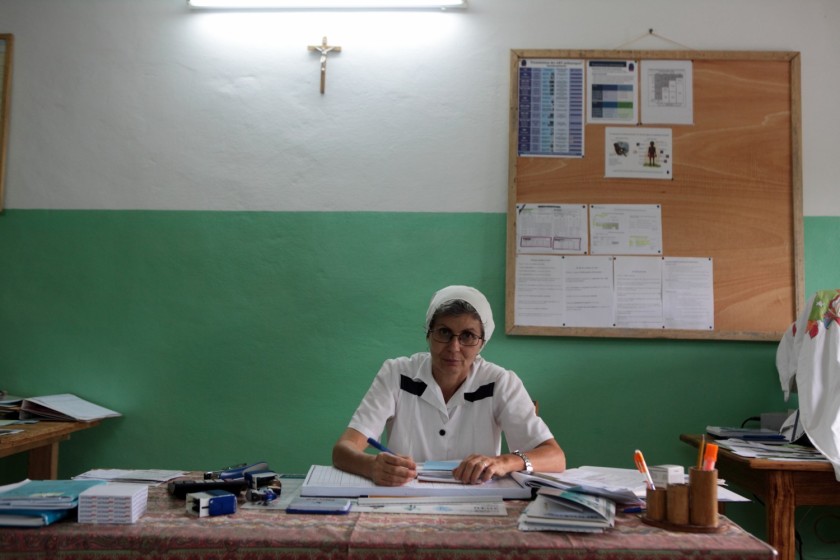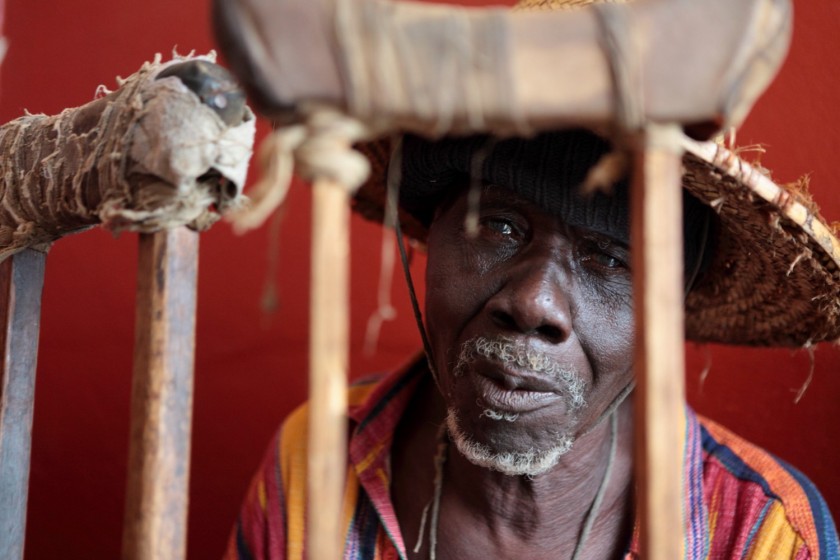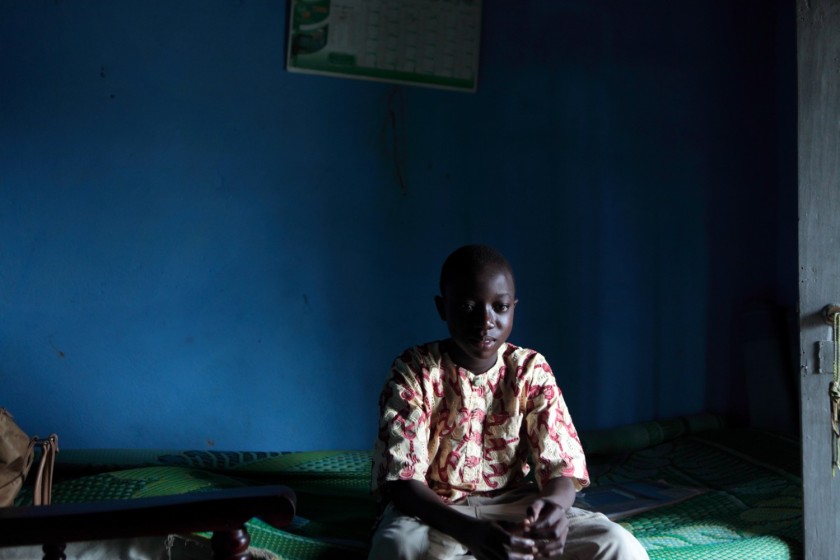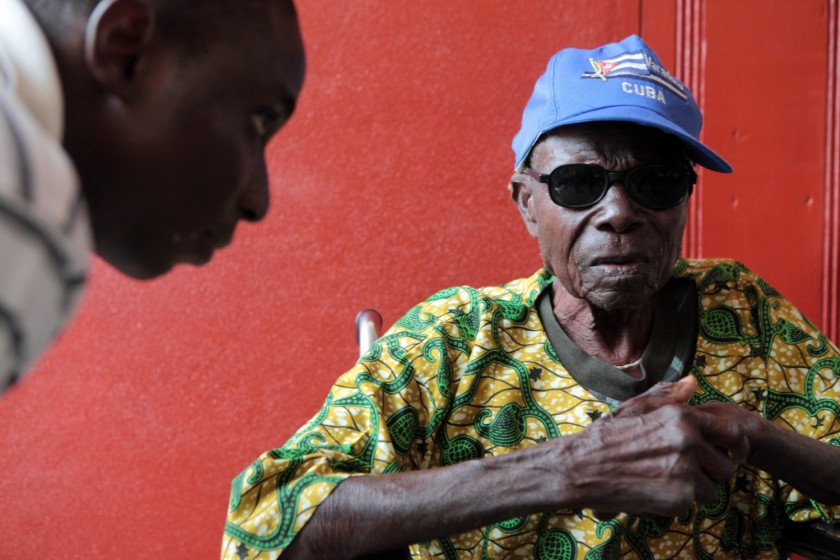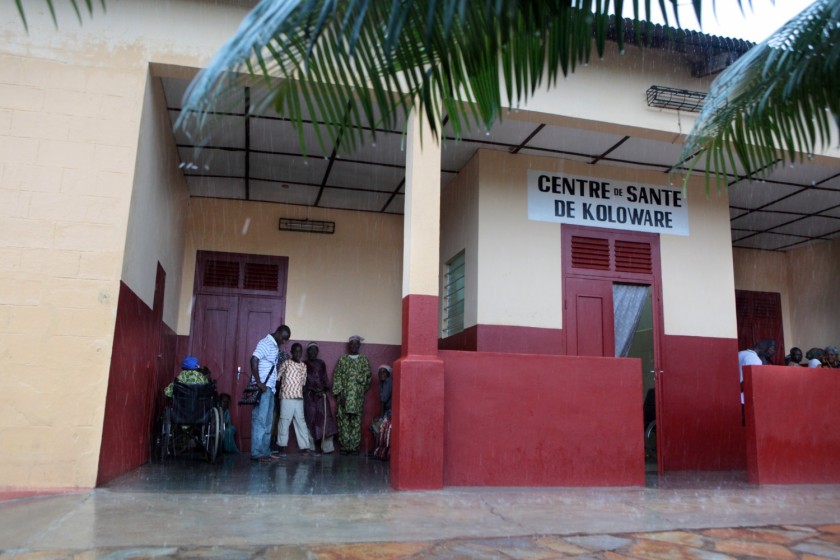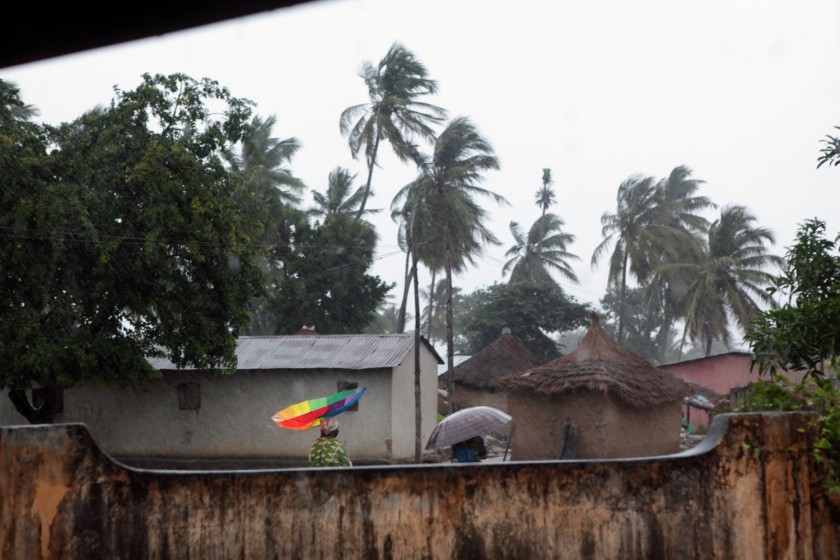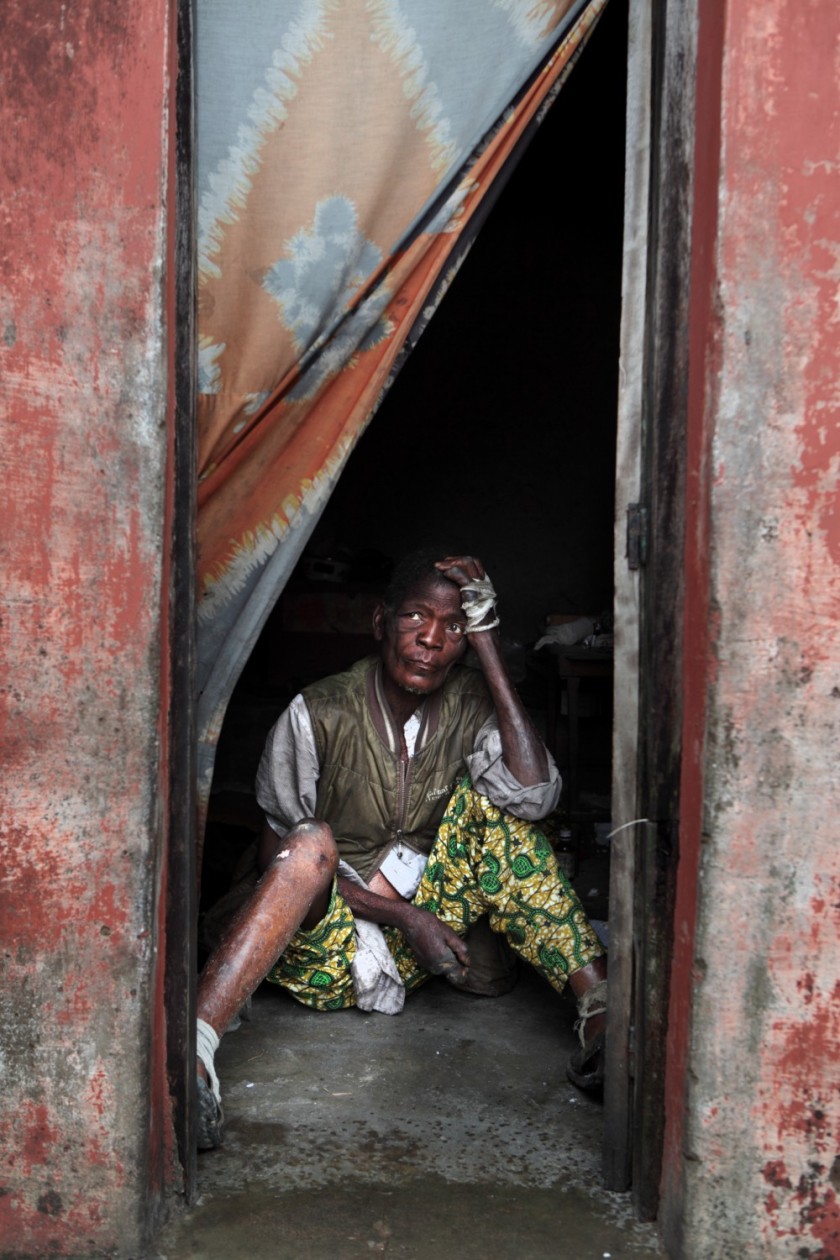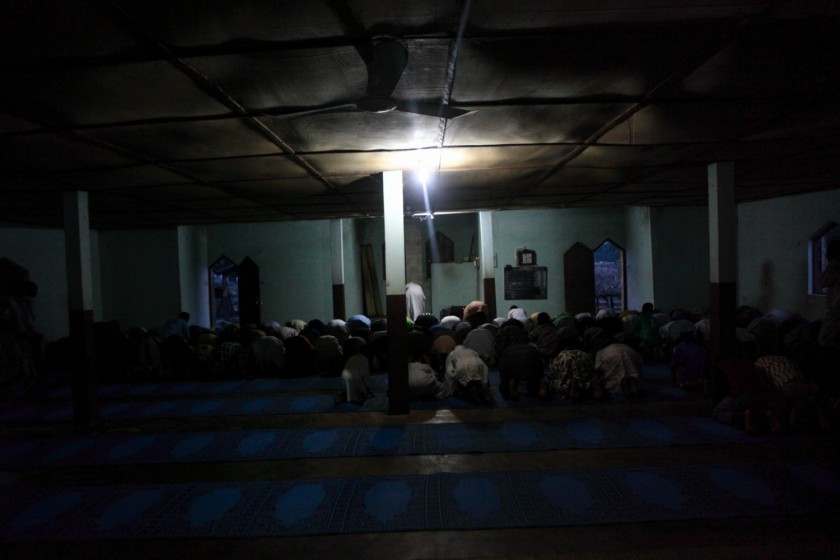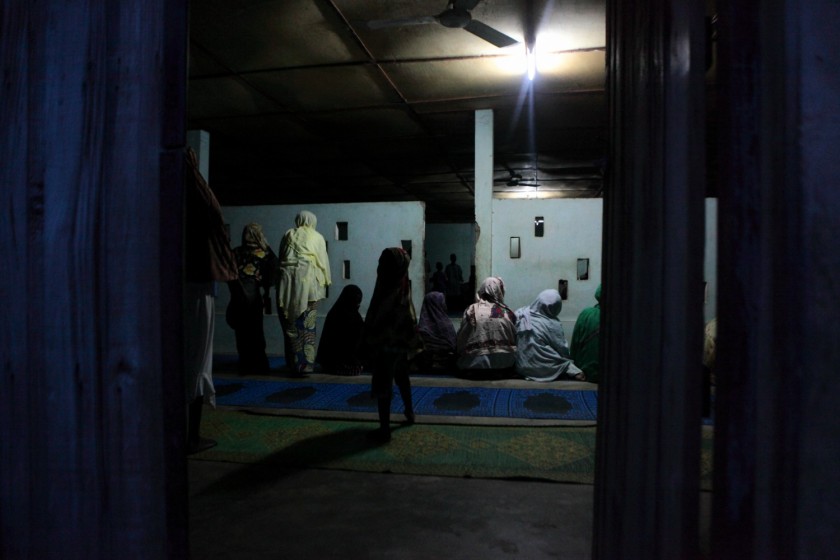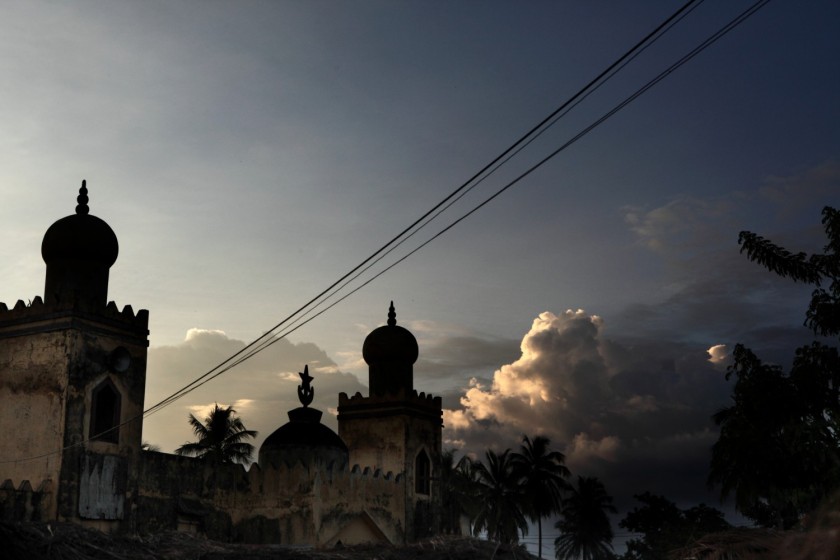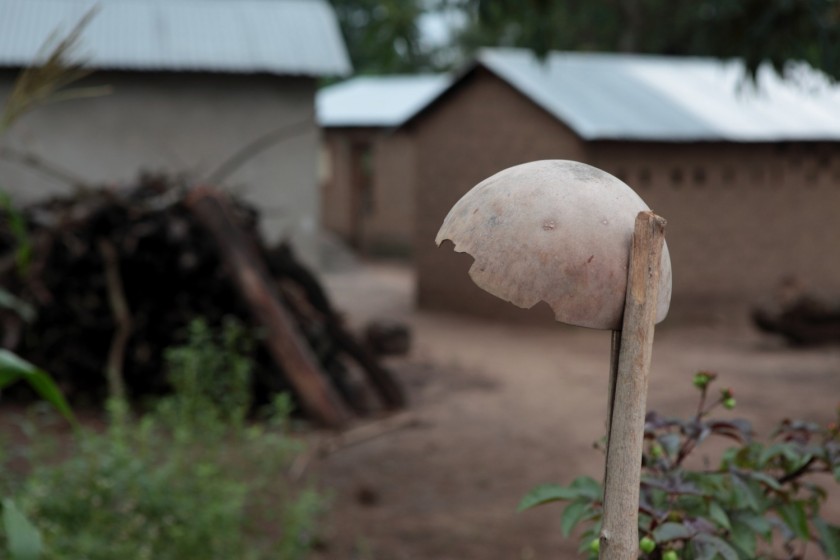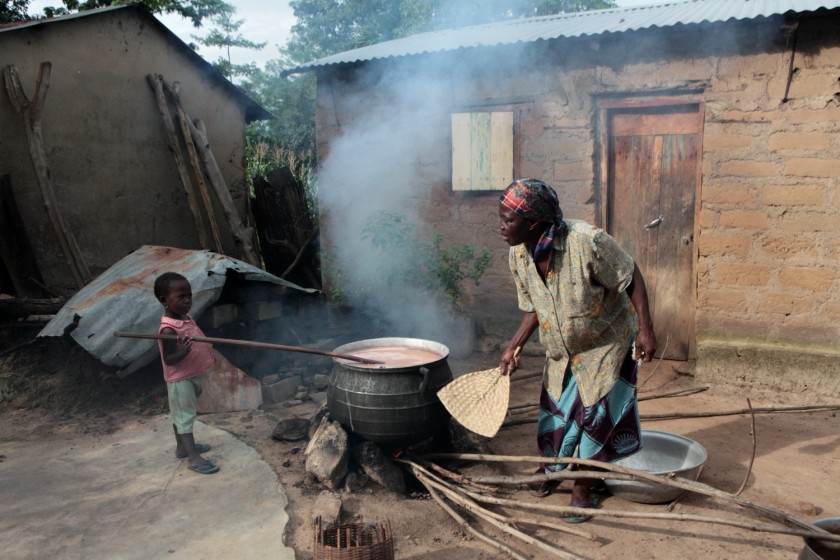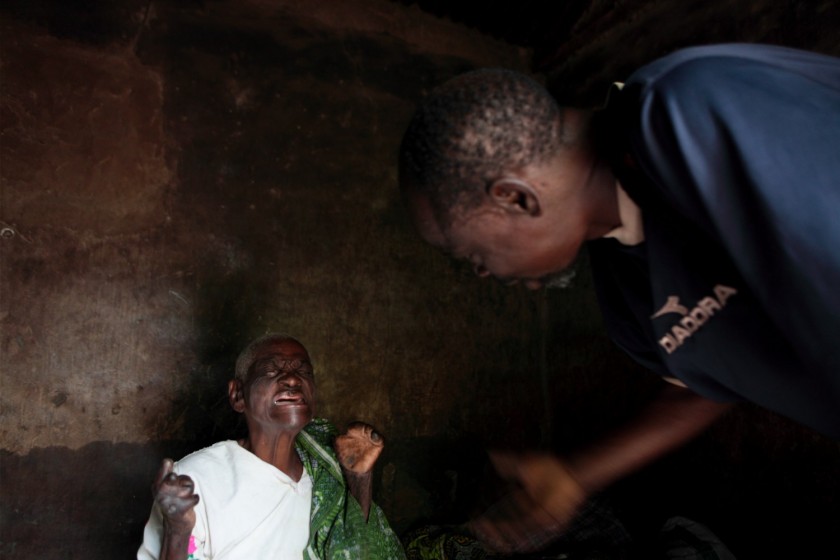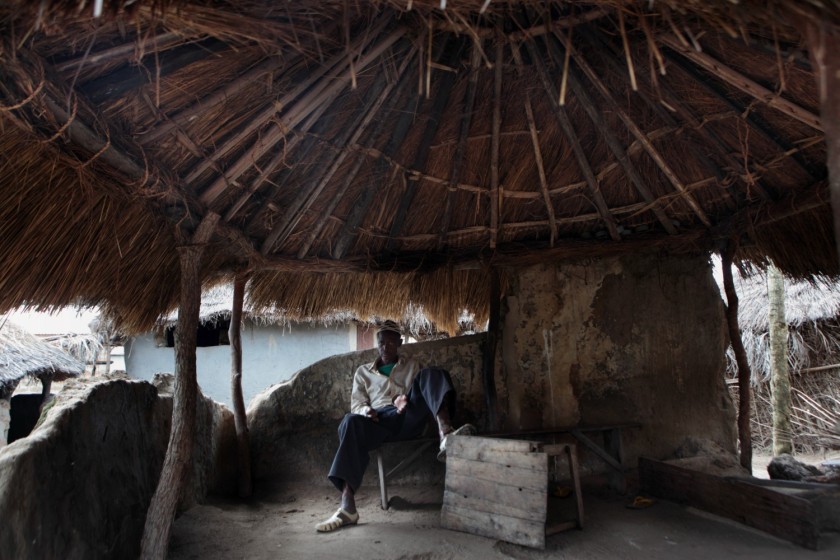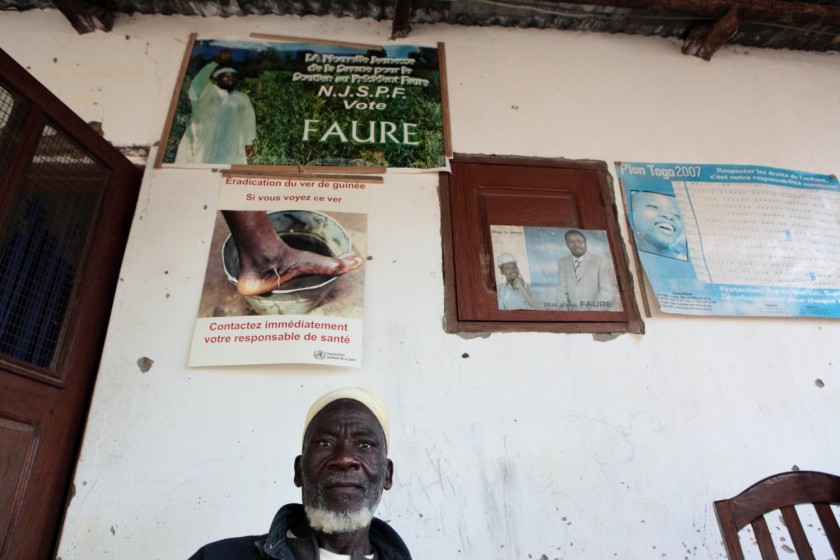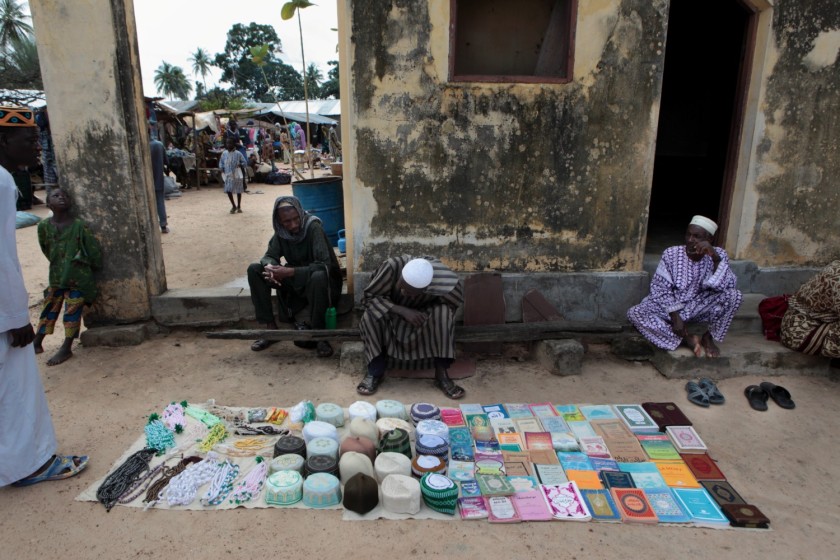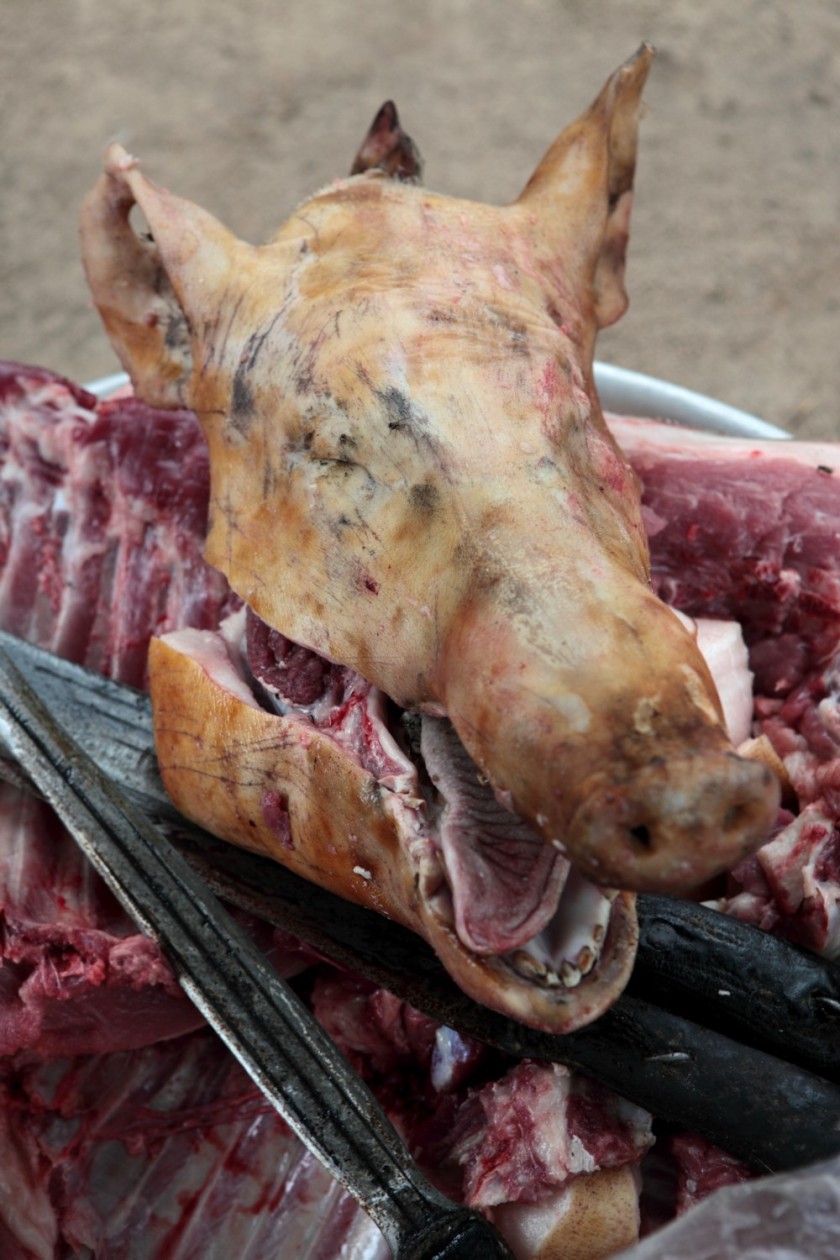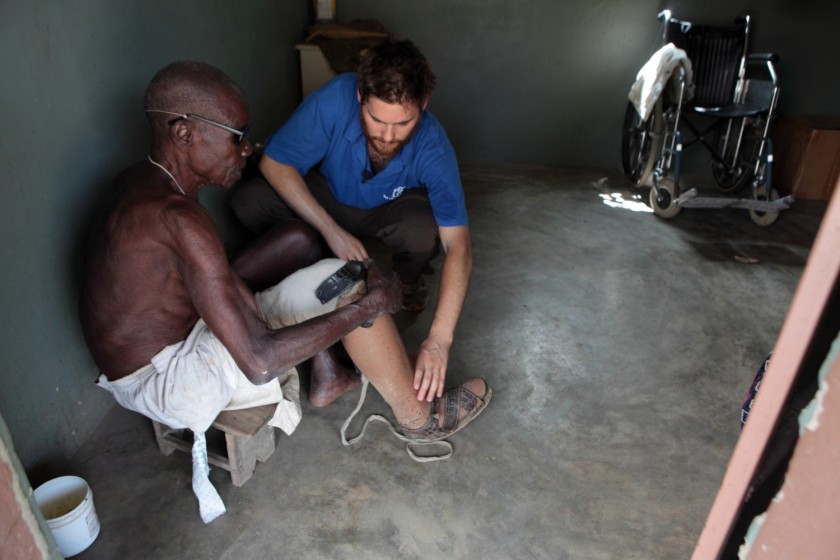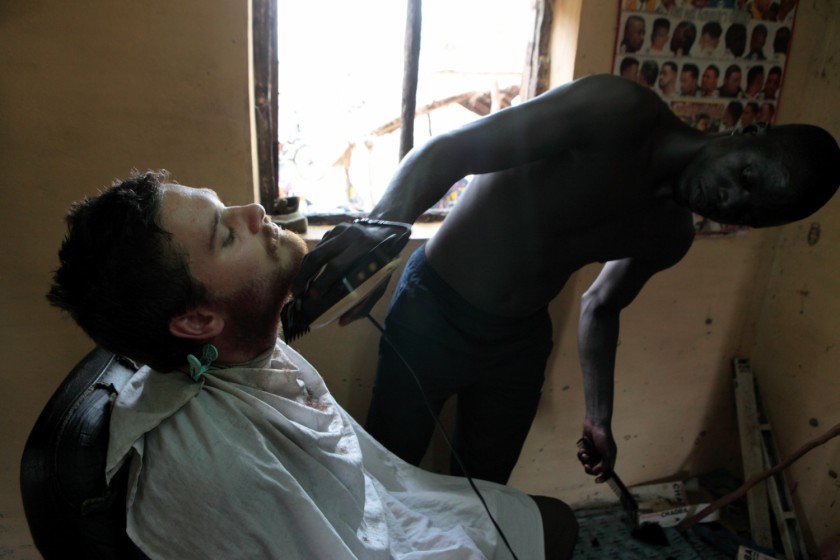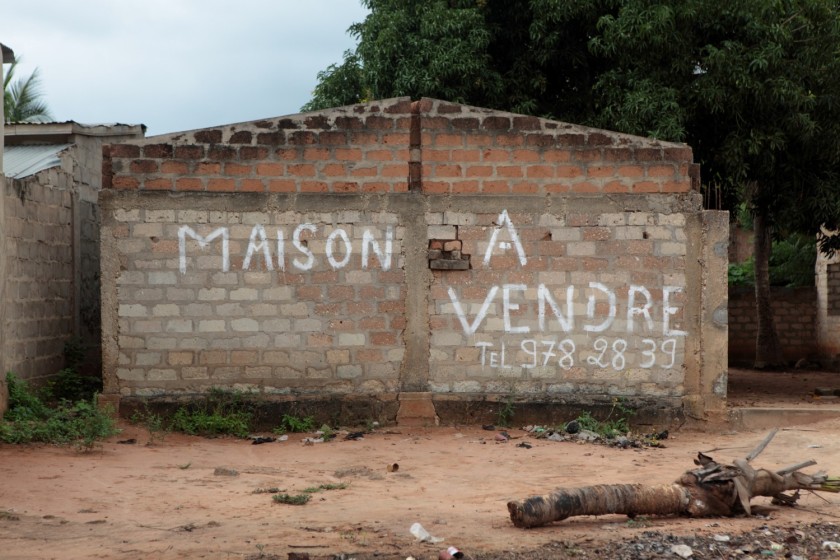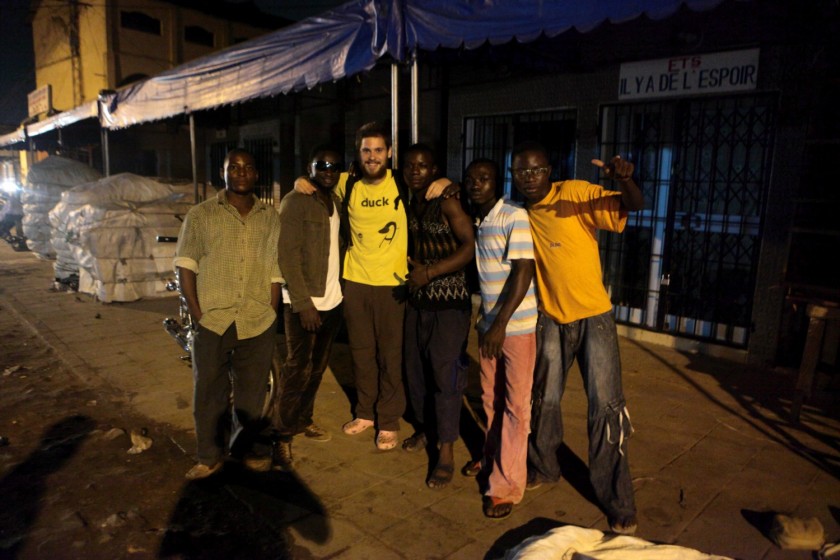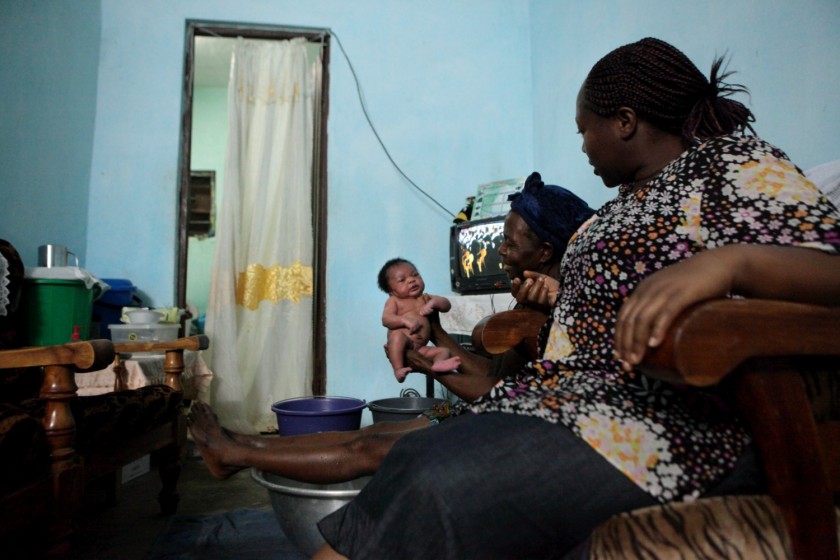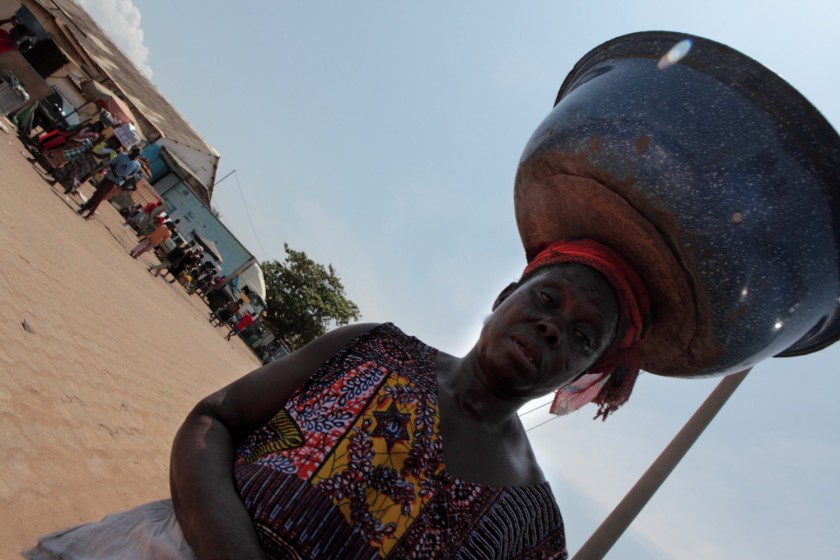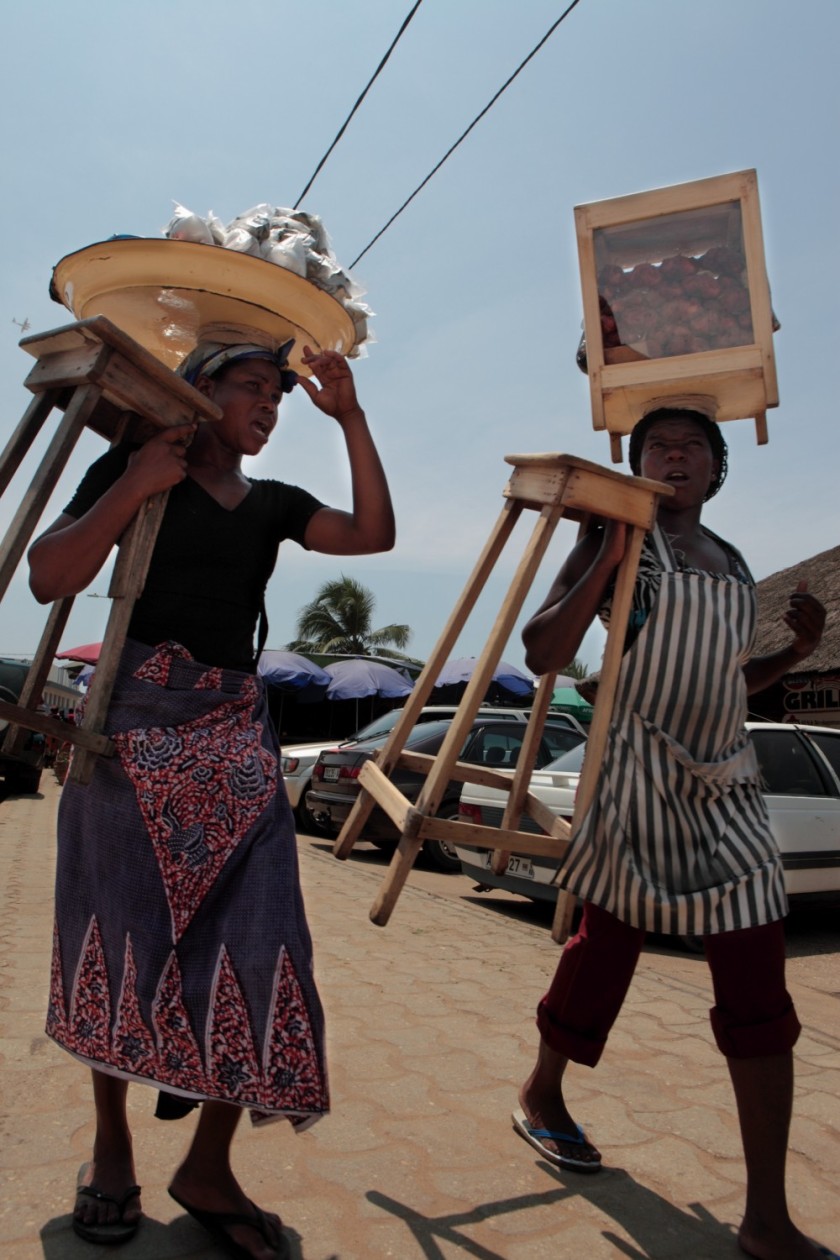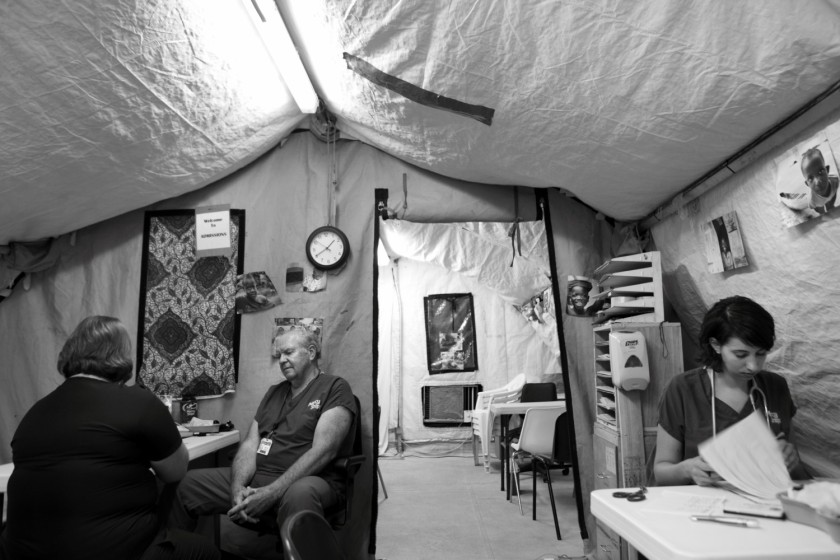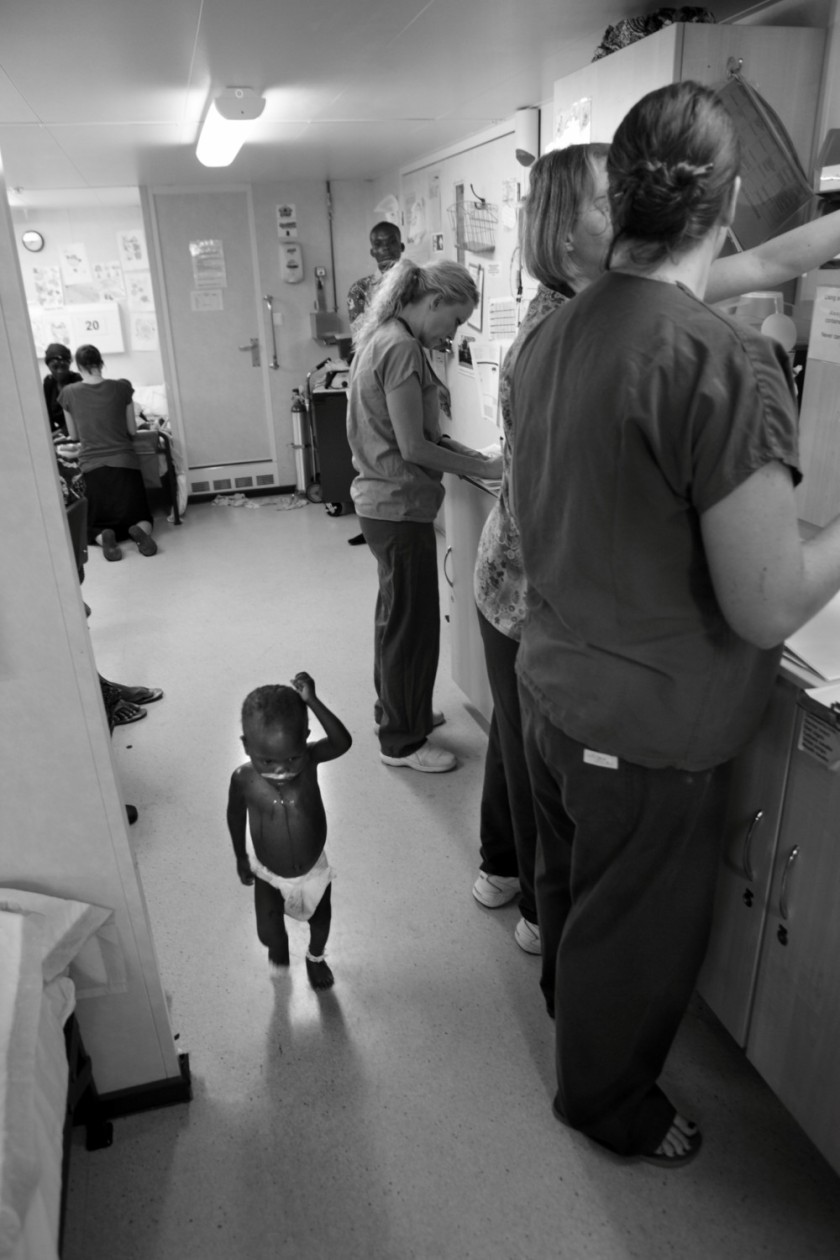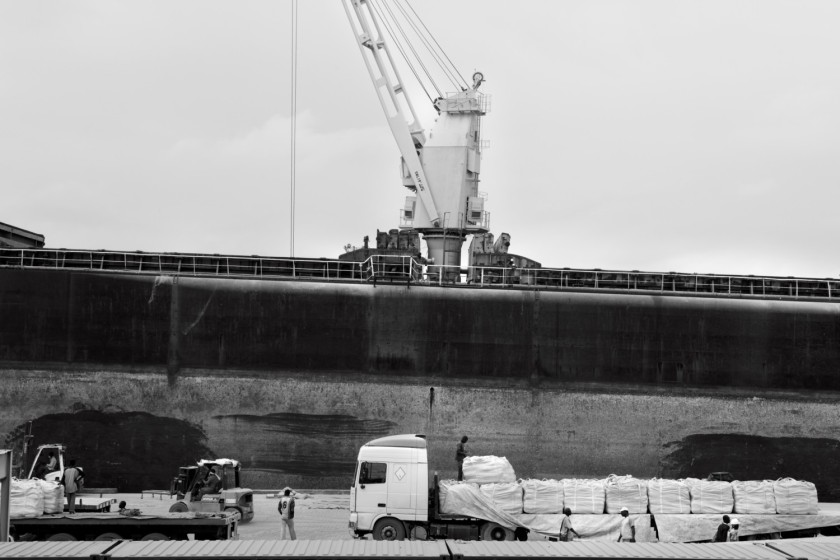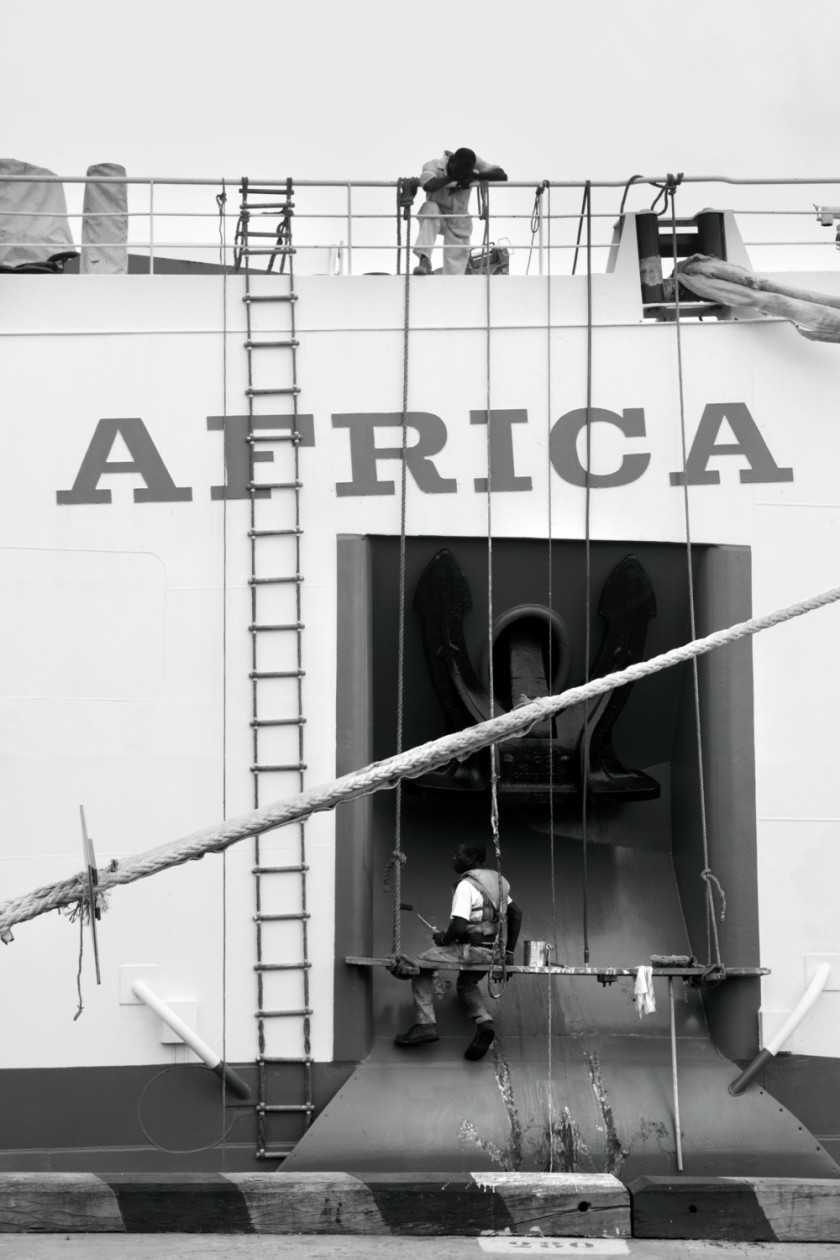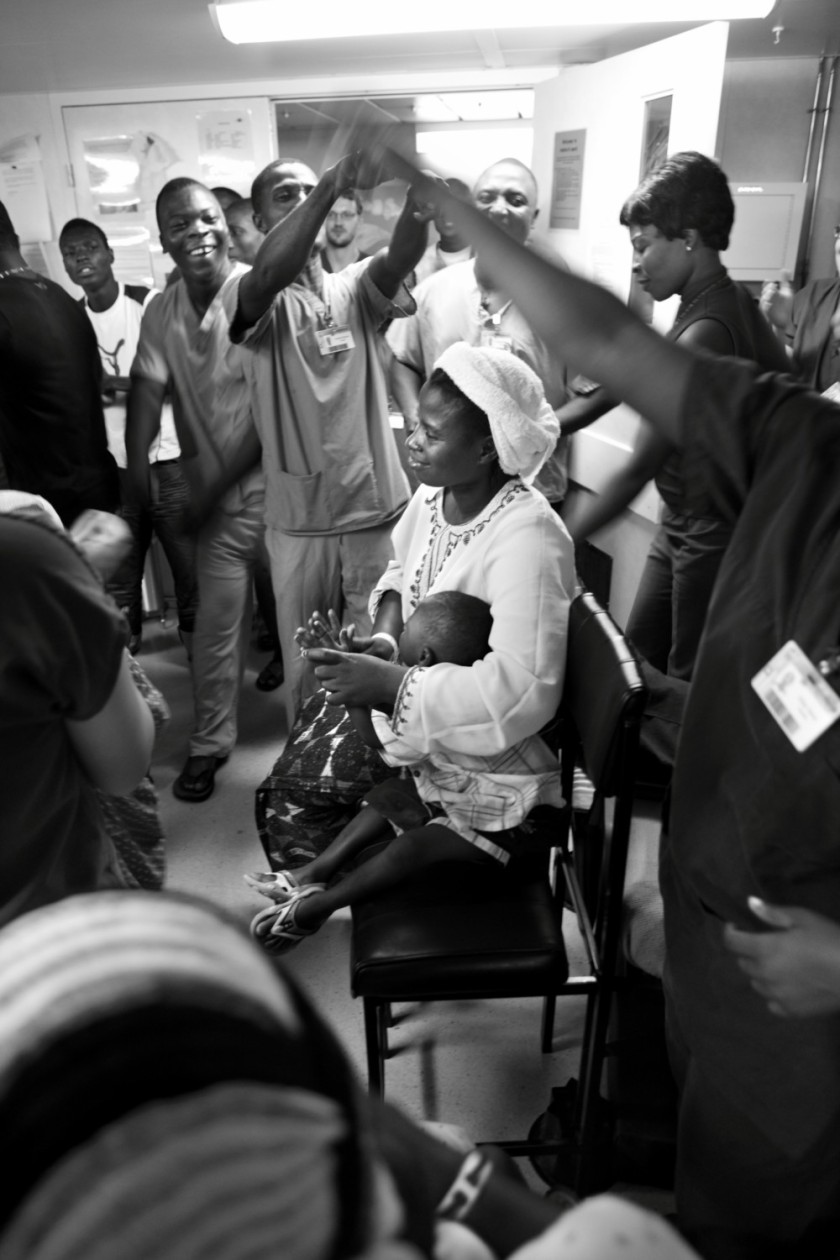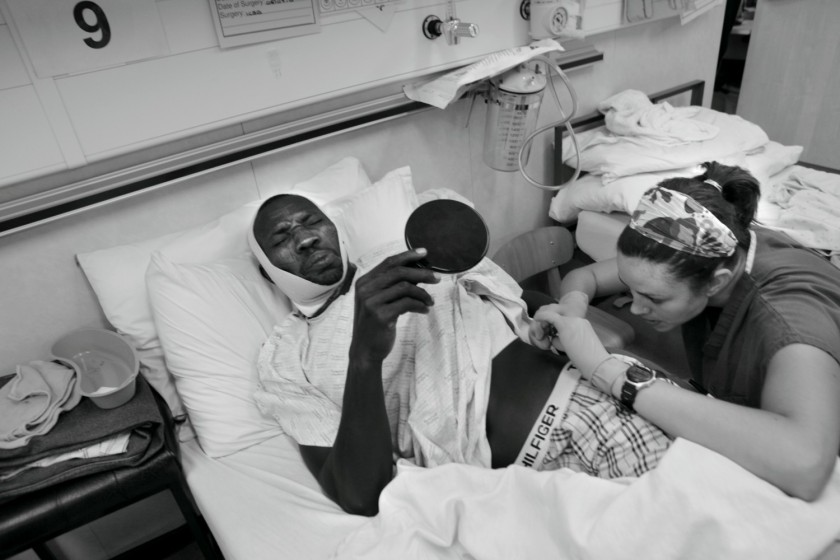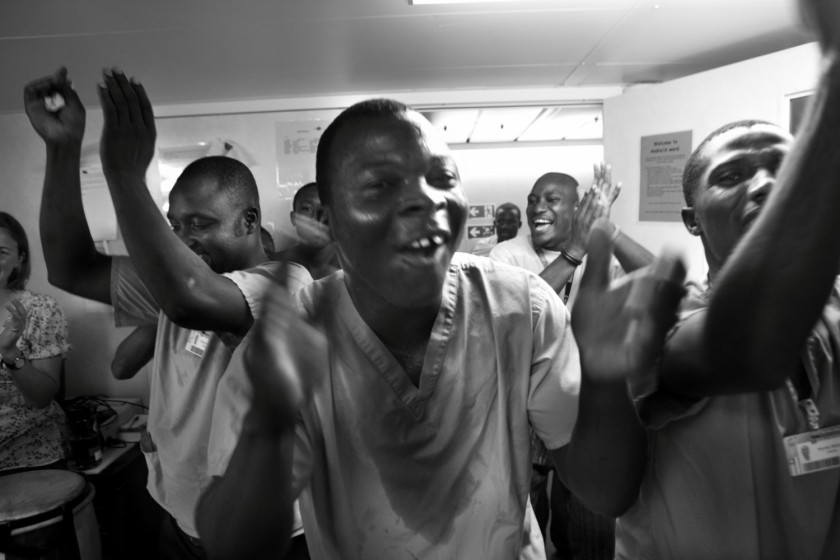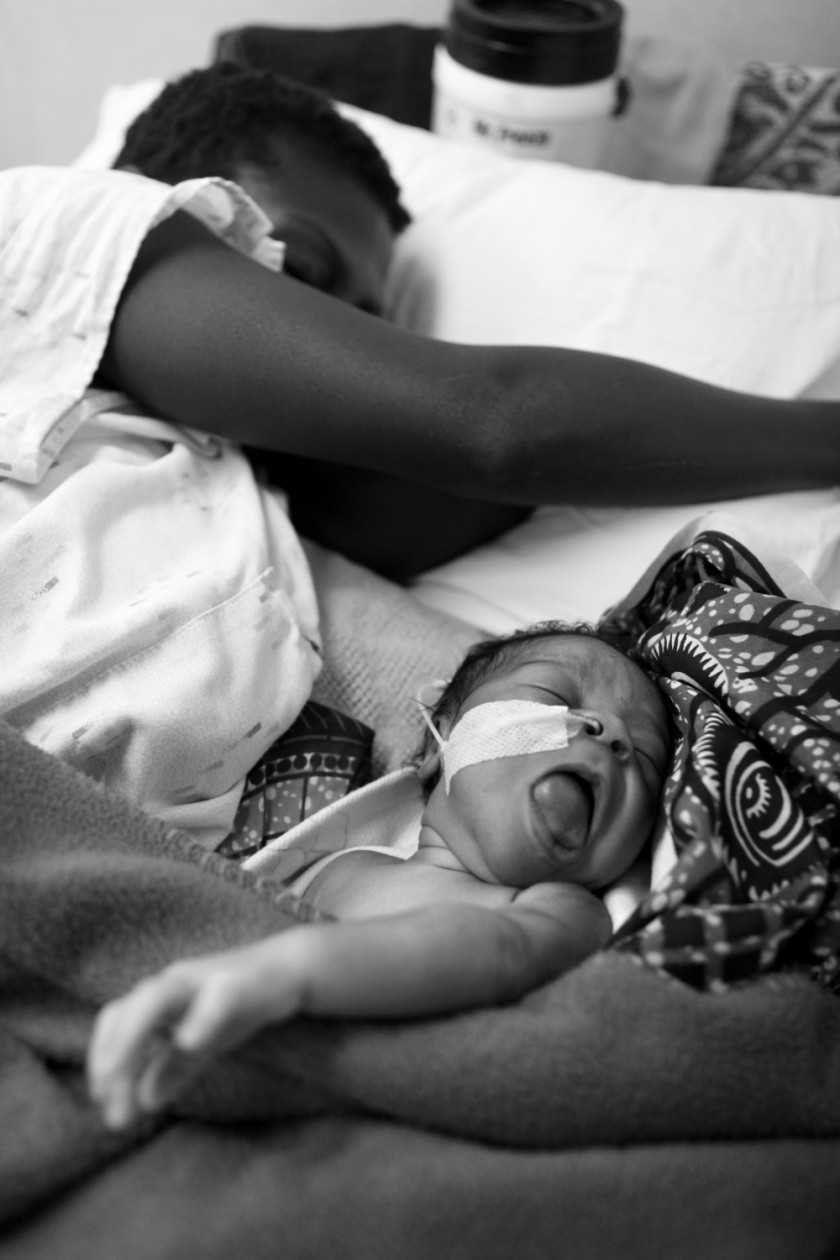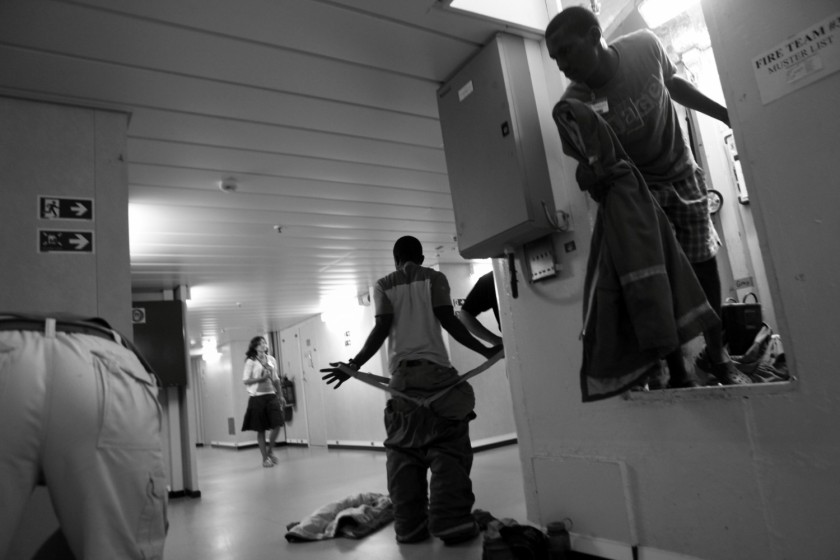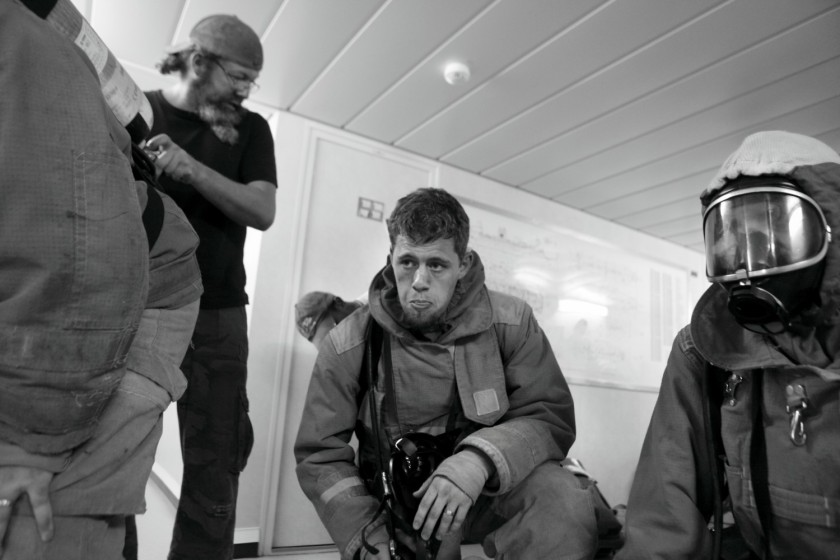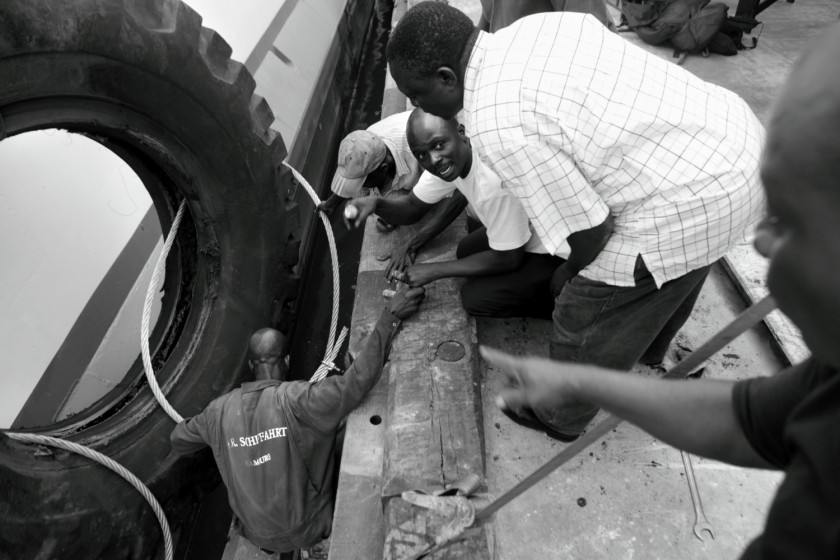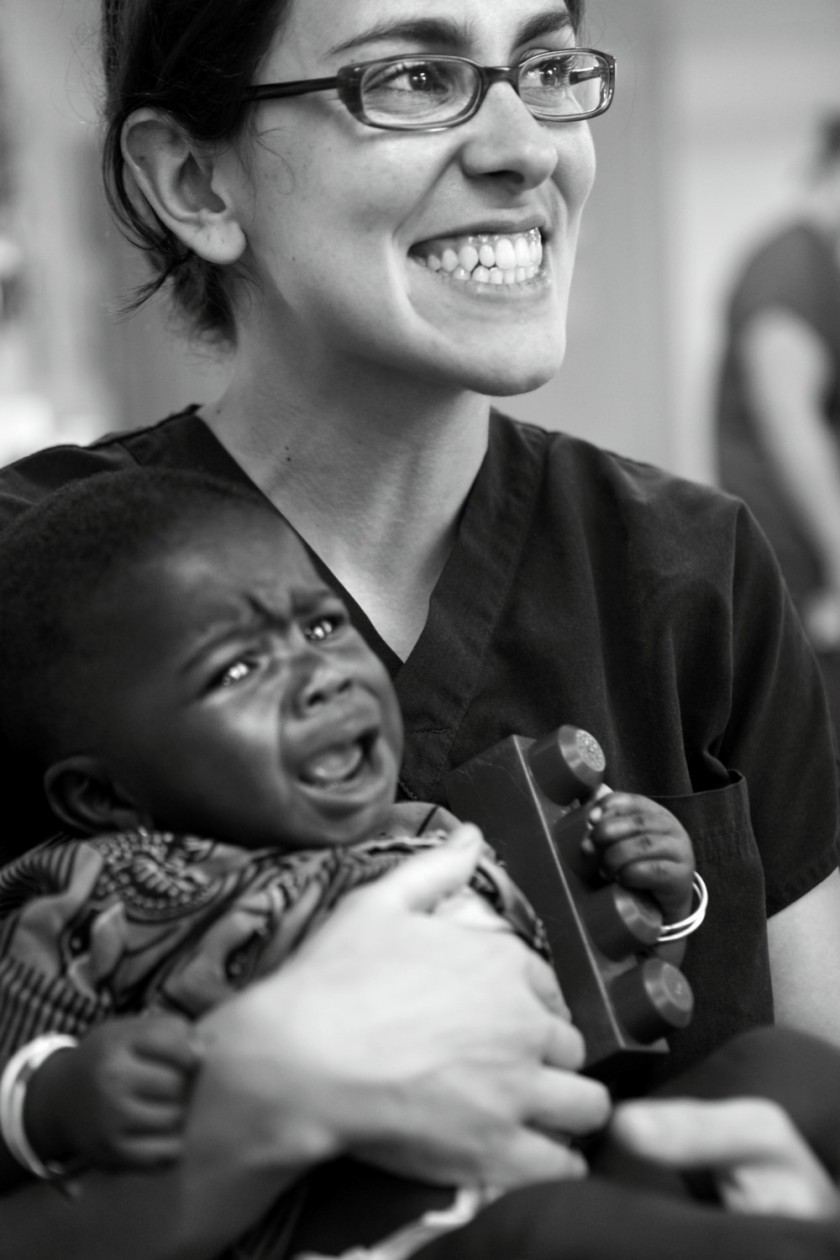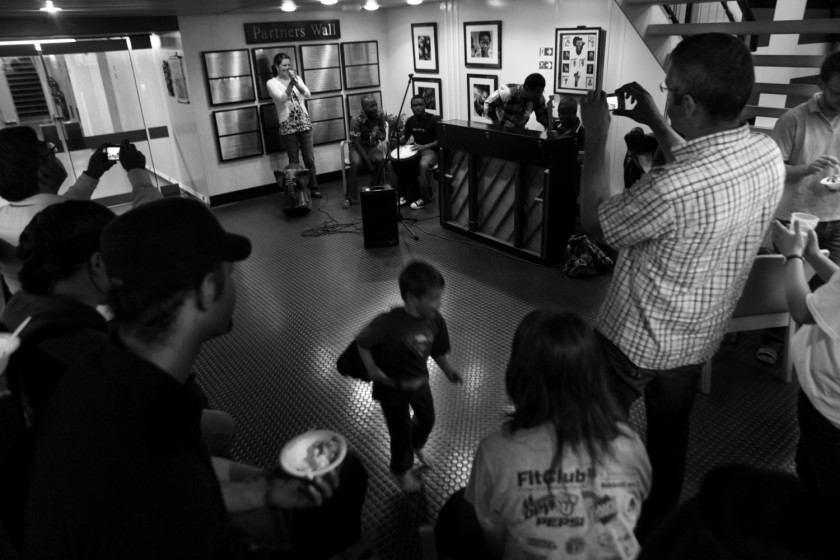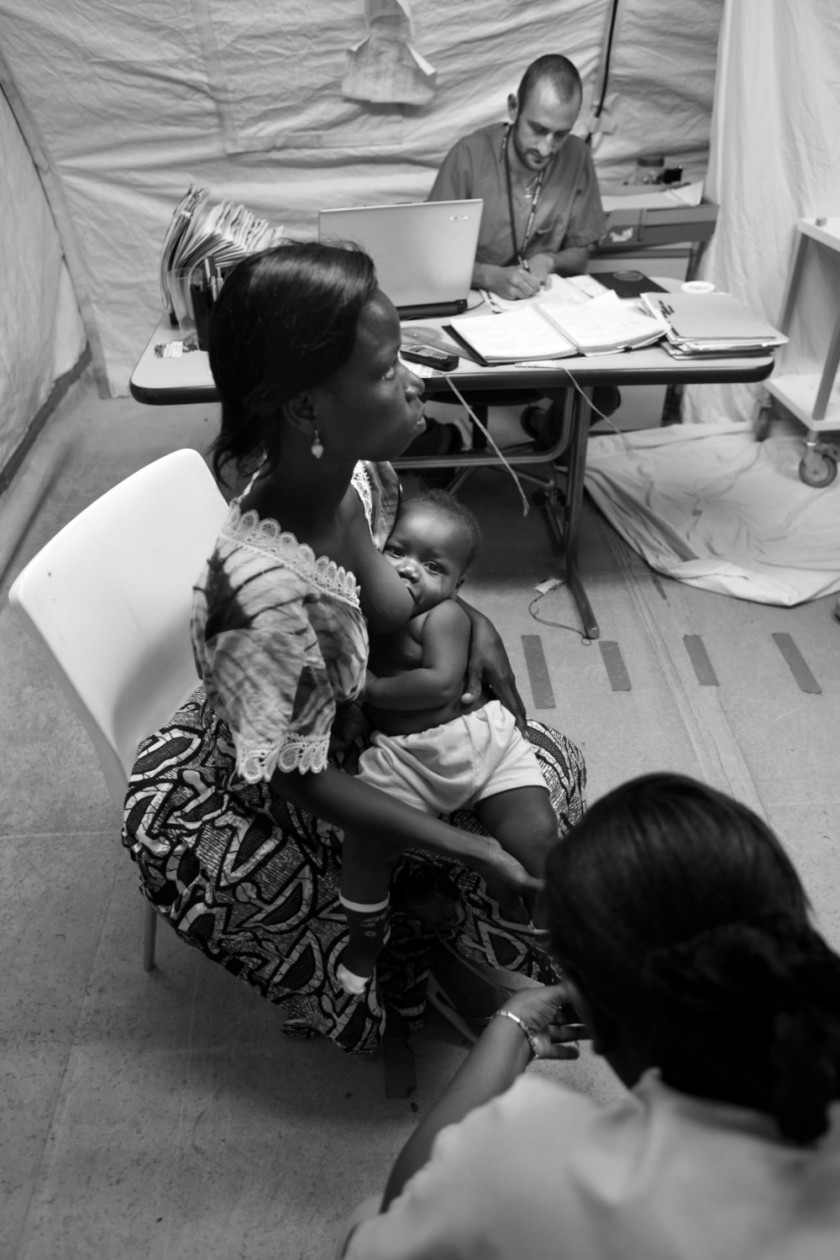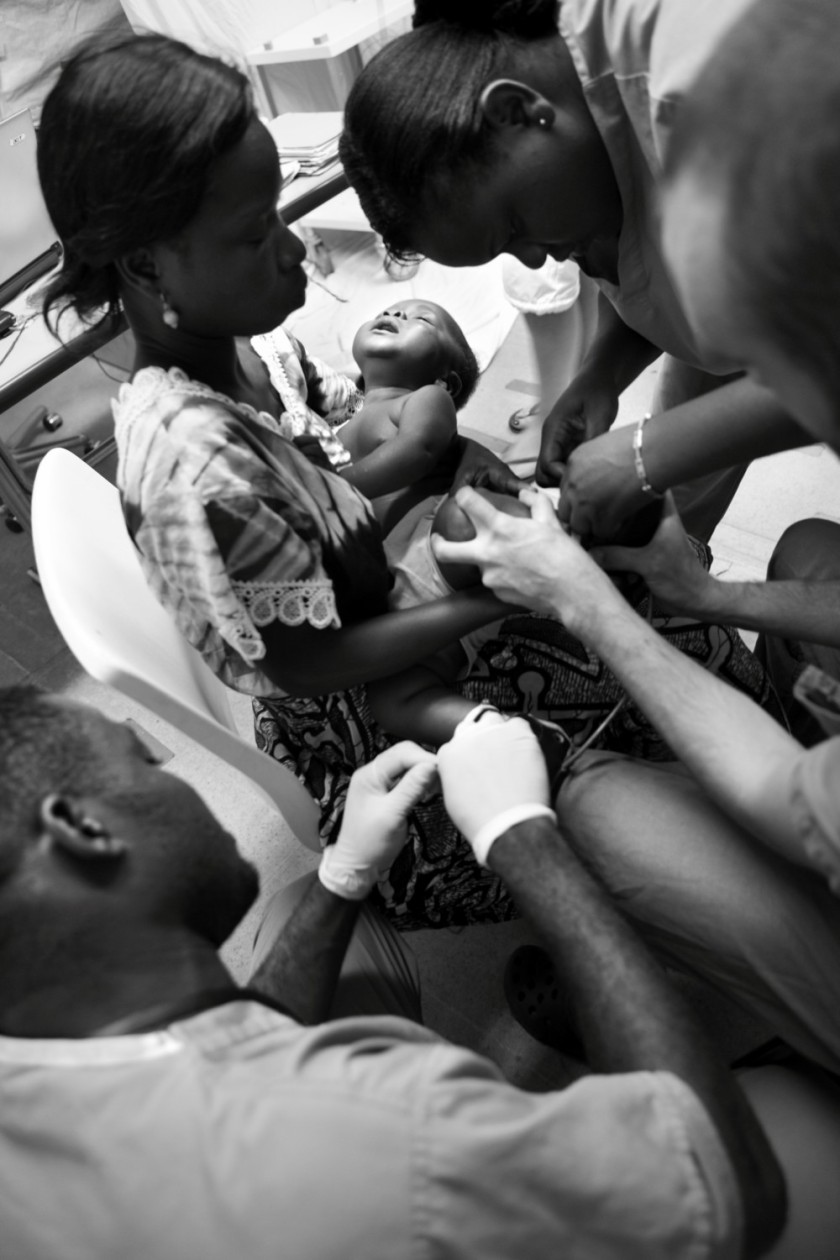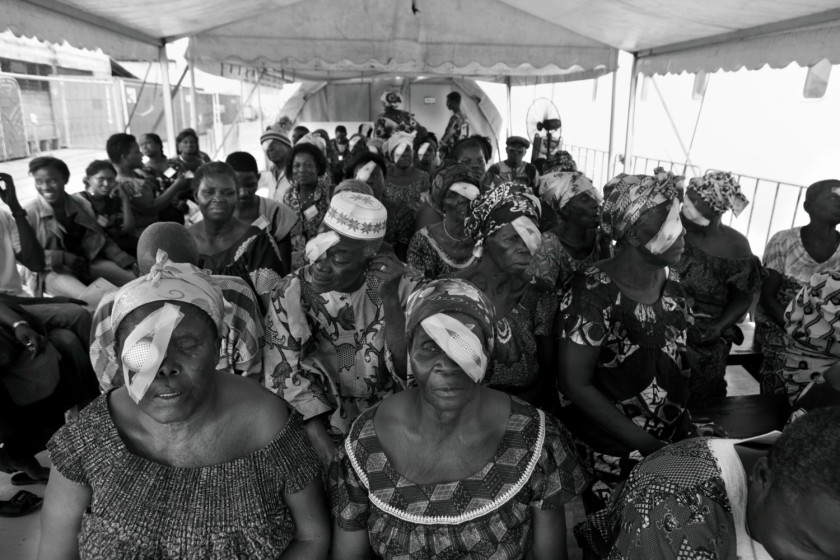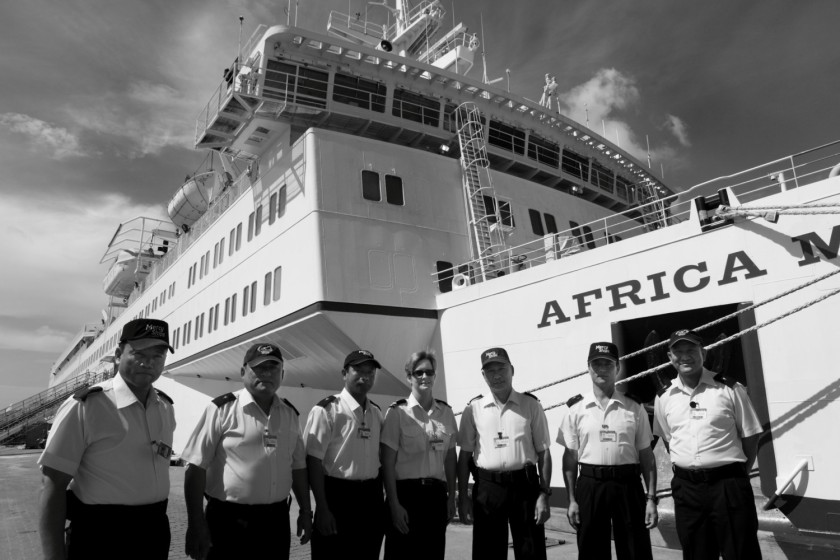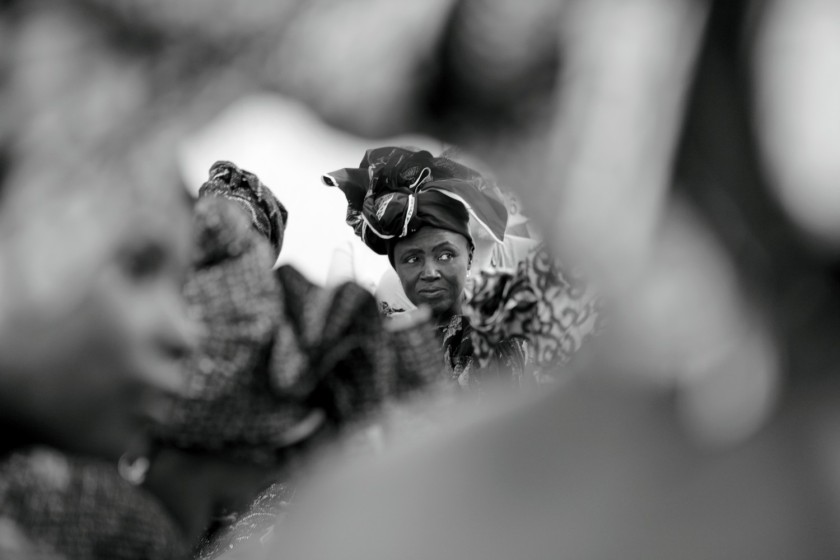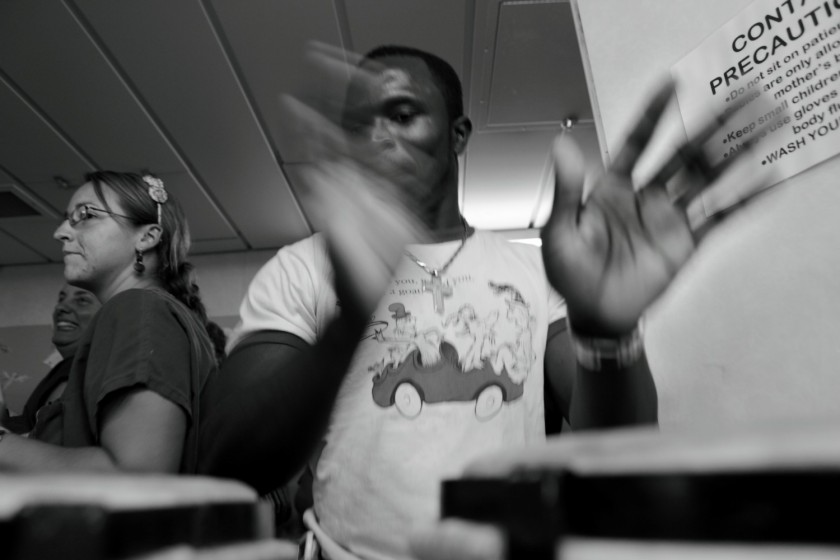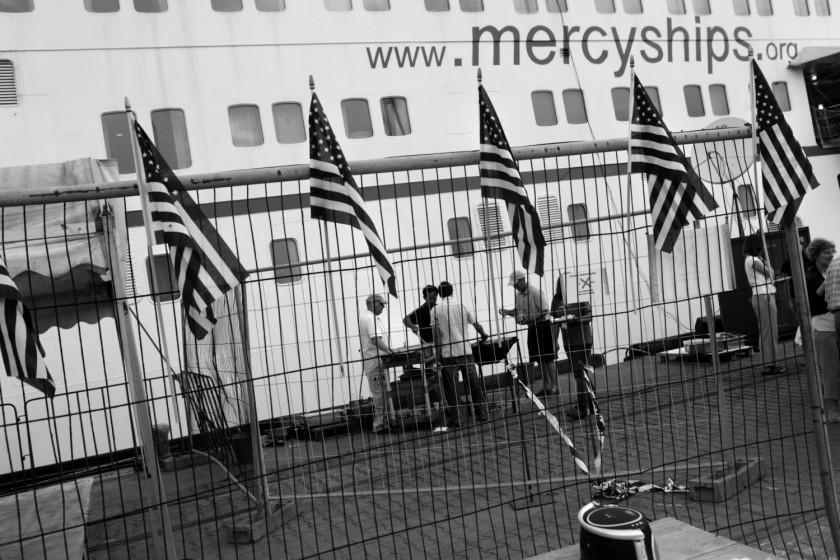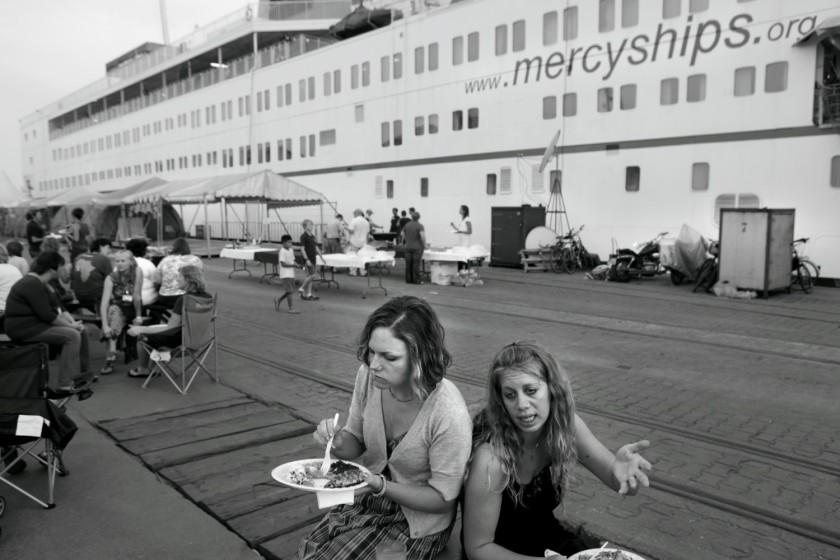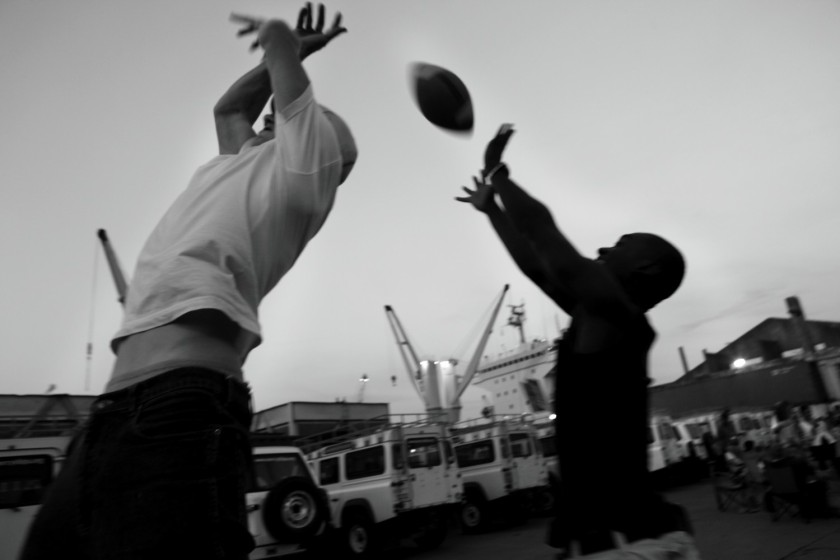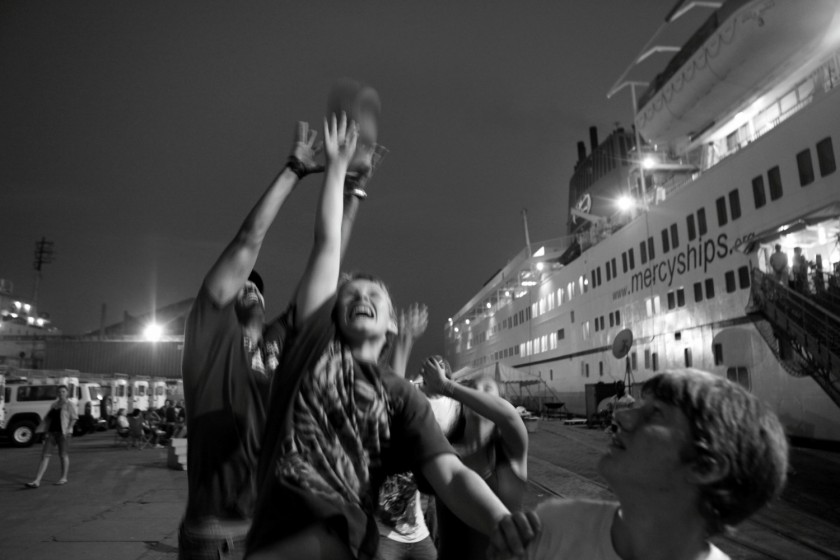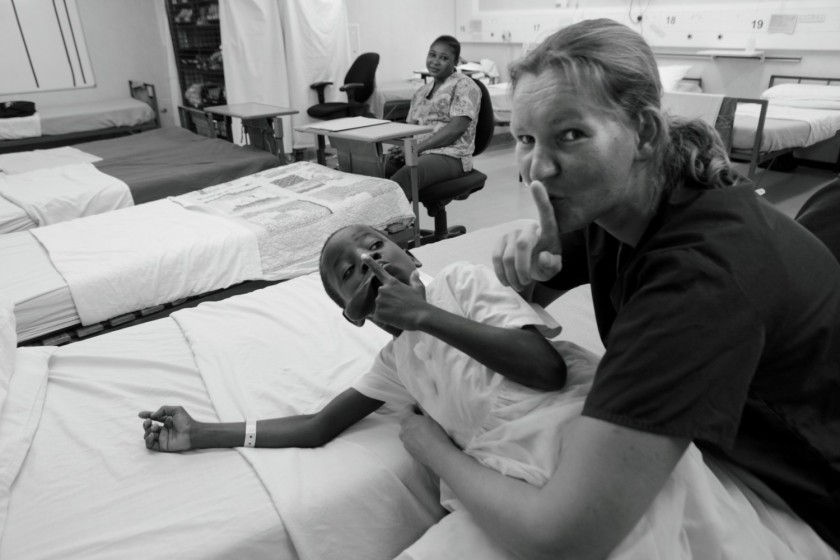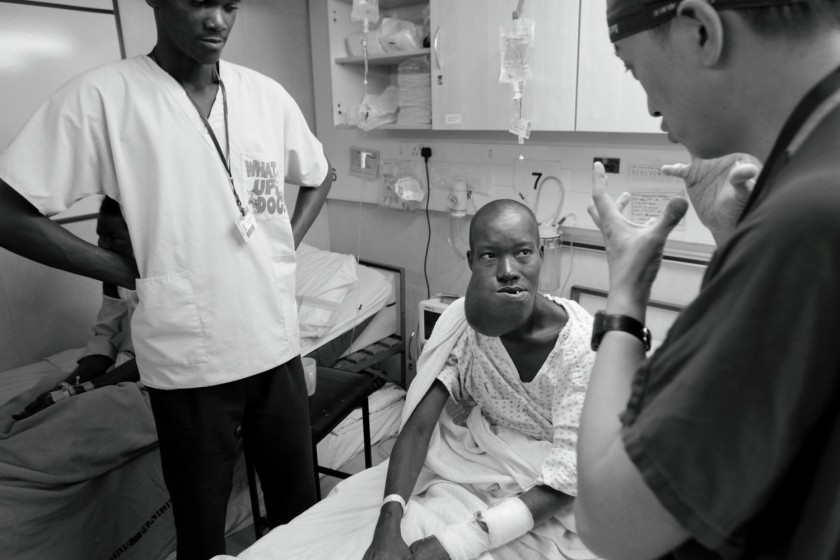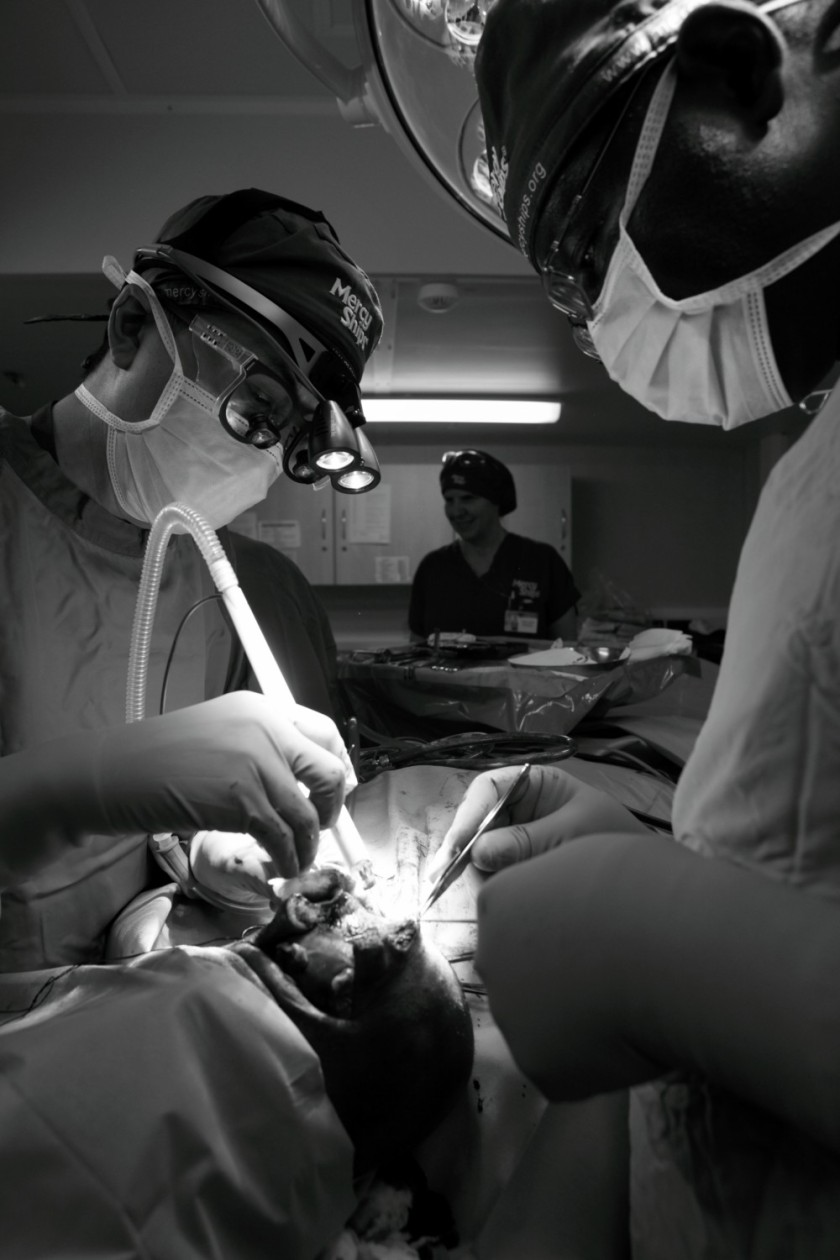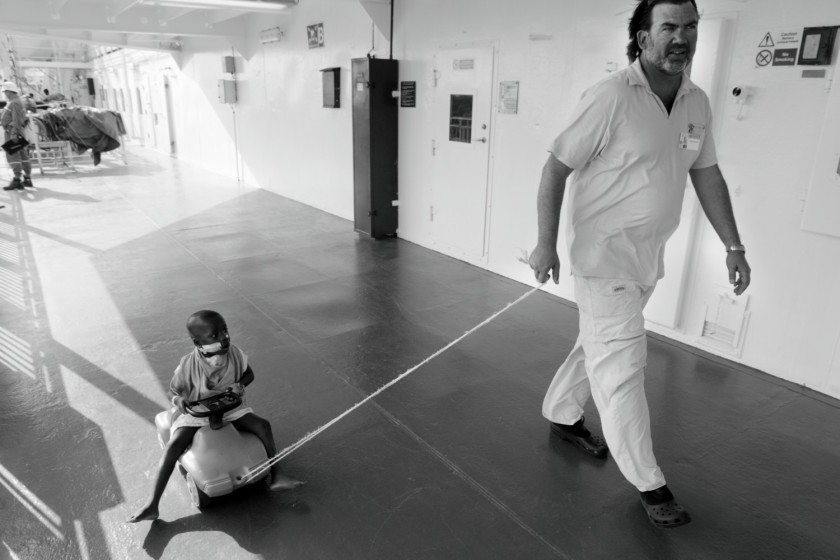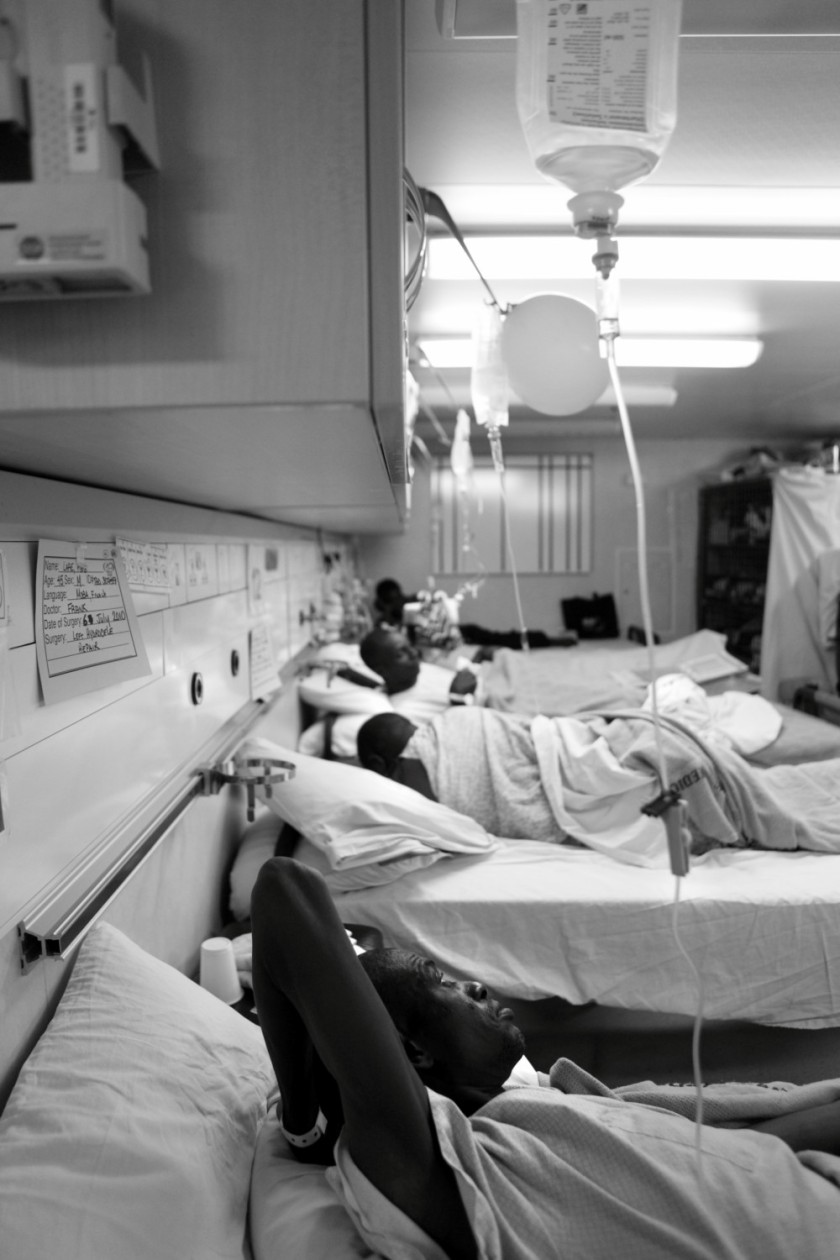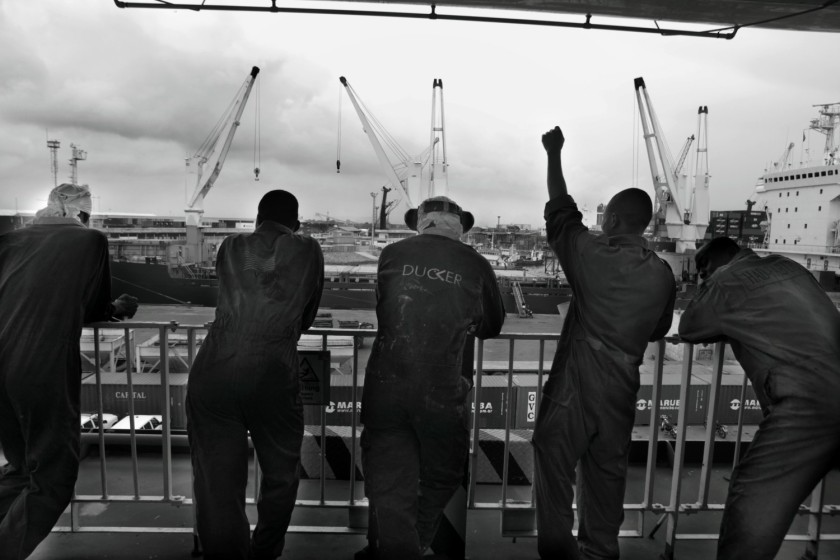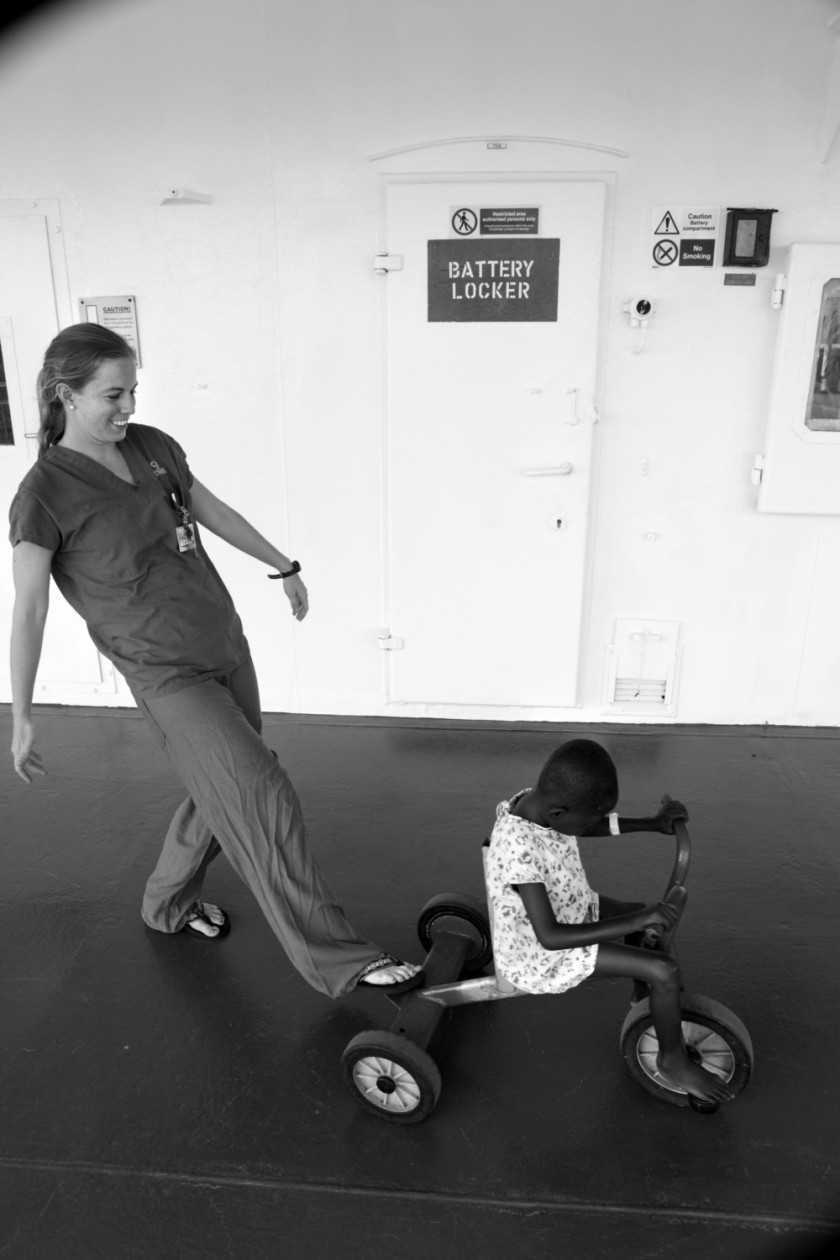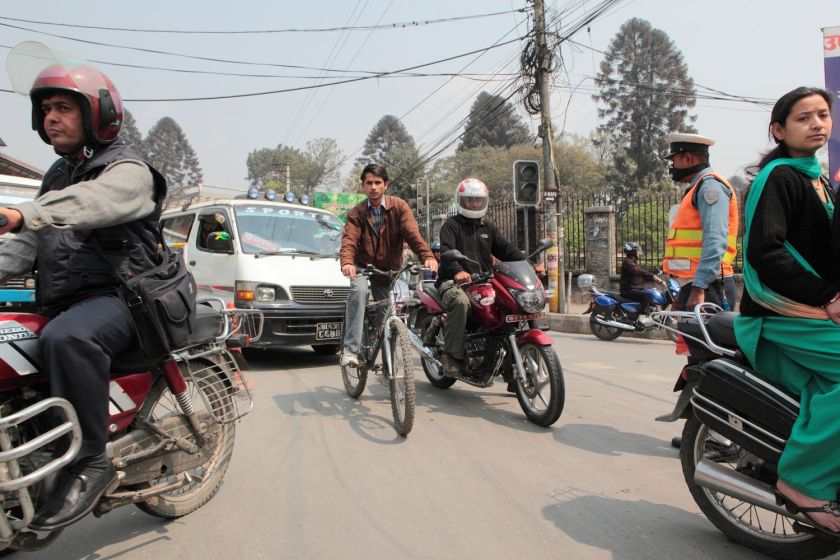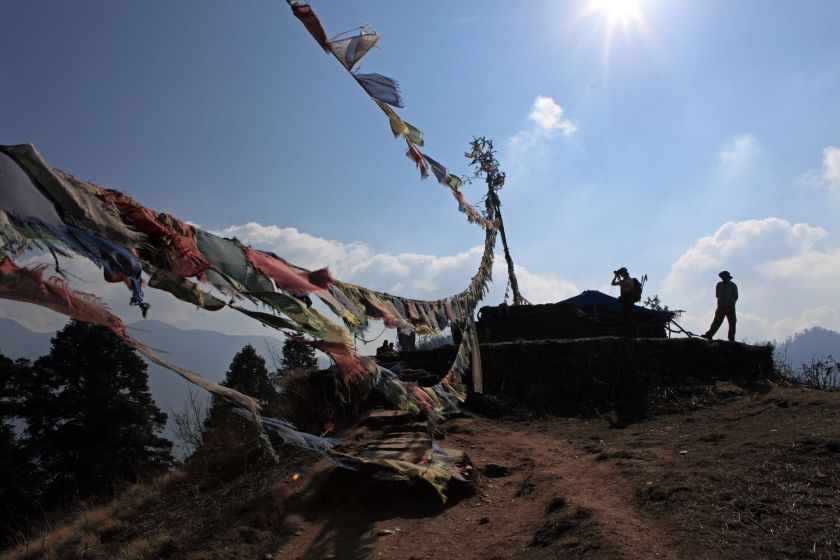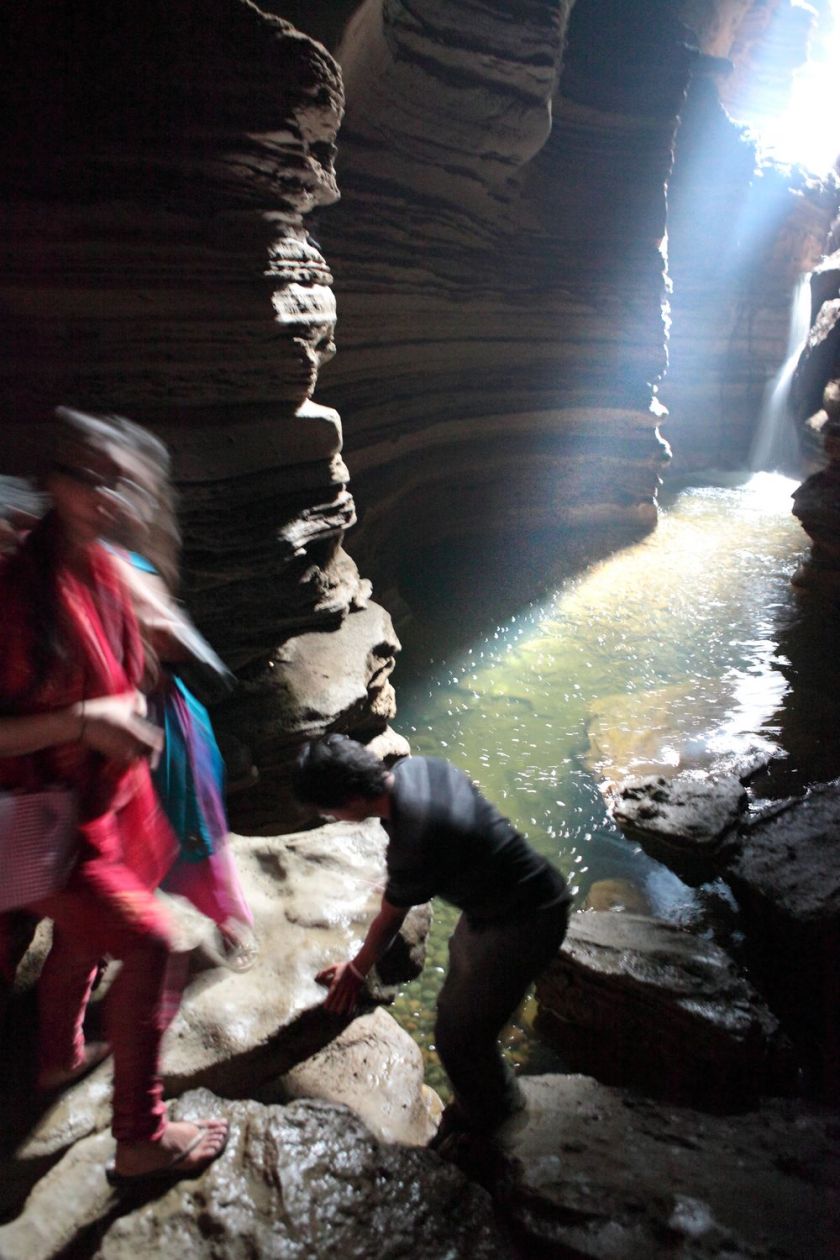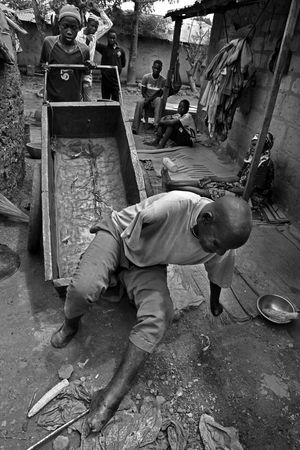MAHAMADOU KEFAS
Mahamadou was 20 when he got leprosy. I spoke to him at Koloware’s Centre de Sante, formally Centre de Lepreserie, a Catholic Mission near Sokode in Togo, West Africa. He was born in neighbouring Benin, and was working on a farm in Anie with his father when he noticed a cut on his arm that he hadn’t felt. He realised that his entire body was going numb. I spoke to him as he sat in his wheelchair outside the wound care room where Tchedre the nurse was doing dressing changes for several patients at 7.30am on a Friday morning. Most of the patients who were due to have their wounds looked at had not turned up due to heavy rains that morning. This is not uncommon, but unchecked wounds do get worse. Stones often turn up in foot wounds and infection sets in very quickly. It is these infections that result in rotting flesh that drops off or requires amputation, leading to loss of digits and limbs.
Mahamadou told his father about the symptoms and was taken to a hospital where a doctor correctly diagnosed it as leprosy. He was due to go into the local clinic near where he lived in southern Togo three times a week for injections. However continuing to work on the farm he suffered more cuts which started to get infected. Word spread that he had leprosy. No-one would hang around with him anymore. If he went out people would shy away from him. He told me that his friends would see him then simply turn around and run away. He lived with his father who stuck by him, but the rest of his relatives did not visit or speak to him. Eventually he stopped going out completely. The only people he spoke to for several years were his father and the doctor. His Uncle heard about Koloware and his father brought him up to the Leprosy Centre. His father visited him every Saturday for 4 years before he died.
He now lives in a small room in a compound with a total of five rooms, each housing a patient. He is the only one of them that does not have family. The leprosy bacterium (Mycobacterium leprae – closely related to tuberculosis) that causes the numbness is no longer active in him. He has no right foot, no digits on his left hand, cannot feel any part of his body, is blind and according to the World Health Organisation does not have leprosy. He has lived in Koloware like this, relying on food and support from the sisters of the Catholic Mission since the 1960’s.
Above and below: Mahamadou eats alone in his room. He is blind and can’t feel what he’s touching, so makes sure his food bowl is always in the same place between his legs so he knows he’s picking up food. He has no fingers on his left hand, mainly from burning his fingers while cooking during early years at Koloware.
Above: Mahamadou gets a check up every few days at the health post about 40 metres from his house. Missed appointments in the past have lead to the types of infections that took his right leg away from him.
Above: Mahamadou is numb over almost his entire body.
TCHEDRE WALLAKASONA AND THE KOLOWARE LEPROSY CENTRE
Tchedre’s Uncle was a nurse at the Leprosy Centre and encouraged him at 17 to come and work here. He soon learned that despite much help being needed for the 300 ‘lepers’ (at the time) at Koloware there were very few doctors who would even go near them for fear of contracting the disease. The sister who was in charge of the mission at the time saw potential in him and with the private funding that the centre gets from European (primarily German these days) individuals sent him to the nearest town, Sokode to get trained as a nurse.
Despite retiring 5 years ago, he still comes in three times a week to check and clean the wounds on many of the patients. He described the attitude of many of his patients as like that of children: “Every day you must bring them in to take their medicine, or get dressing changes. But they can’t feel the pain, and I see them handle red hot pans with their hands. If they have work to be doing at home (such as cooking, or even farming for the few that are able) they choose that over coming in for their check-up. When they do come in I sometimes see stones lodged in their wounds (causing infections) because they haven’t been checked in several days. I even tell them not to go into the field to work after I’ve changed their dressings, yet they do and get dirt all over them”.
He is dealing for the most part with the very poorest people that have received no education. Sometimes it is hard to have sympathy for those that don’t seem to want to help themselves, but in the cases of these men and women their priorities are always going to be food, water and whatever family is still around them above a cut that does not affect them at present and that does not feel painful. Such is their way of life. Tchedre obviously cares enough to carry on having retired.
He told me that in the central region (where Koloware is located) about 50 people get diagnosed with leprosy each year. It’s not exactly a ground breaking figure, but such a feared disease also means that many will be hiding their symptoms – like almost all of those that attend Koloware Health Centre once did. Women especially suffer from this – if the husband doesn’t throw them out outright they’ll almost certainly be hidden away for fear of bringing shame on the family. Leprosy is not a fast acting disease, developing over many years. But with most of the people that get it ignoring the patches and numbness out of ignorance or fear, the later stages are often reached even in these current days when the Multi-Drug Therapy (MDT) cure is readily available worldwide.
They are able to take the drugs at home, only coming in to Sokode (where the central region’s leprosy advisor is) to pick them up and for the occasional check up. But too many times have professional, trained nurses in Sokode hospital refused to touch those with the disease, helping fuel the stigma. Many patients are sent to Koloware for these dressing changes. With the exception of the foreign missionaries (like the director – Sister Antonietta from Italy), all the staff in the health post have been born in Koloware and grown up around those with leprosy. However even in Koloware there’s fear about the disease, despite being educated in how easy it is to cure if caught early.
Just a few weeks before I arrived some farm-hands had seen patches on a sixteen year old co-worker. They suggested it was leprosy, but the boy covered them up with his shirt insisting it was from a voodoo curse that was put on him – the more bearable burden. Fortunately they confronted him later and he agreed to go for a diagnosis at the health post, where they confirmed it was leprosy. Within two weeks he was no longer contagious; however he will need to make sure he continues taking the MDT for at least a year before the bacteria has completely been eliminated. His colleagues had caught the disease before any nerves had been killed, but if they hadn’t the numbness would remain for the rest of his life, and he would have to be extremely careful as a farmer that those areas of anaesthetised skin don’t get damaged.
There are only a couple of the ‘lepers’ that attend the markets – when people from all around the village come to sell, buy and trade in Koloware. They fear being shunned and rejected. Those that have small businesses rarely attend their own stalls, knowing people will not buy from them. They instead get family to sell for them. Others have little choice, hoping the busyness of the market will pull attention away from them they go about buying the food they must have to survive. Since the leprosy post was founded here 63 years ago there has been only one marriage between a ‘leper’ and a ‘non-leper’. Social mixing is relatively uncommon.
Above: Patients wait outside the Health Centre for dressing changes and check-ups.
Above: Assistants from Koloware help patients clean out infected wounds under the tap before they are looked at by the nurse.
Above: When you can’t feel your feet you can’t tell when your feet get too big for your shoes or when they are crushed. Permanent disfigurement can make walking extremely difficult.
Above: Tchedre Wallakasona, who has worked at Koloware since 1967 and despite retiring five years ago still comes in three times a week.
Above: Tchedre examines a regular patient while a child looks through the curtain from the room next door. The Health Centre now attends other diseases and injuries as well as leprosy, it’s main purpose when it was founded over 60 years ago.
Above: A ‘leper’ makes twine to sell to bind straw onto roofs. I saw a few patients doing this job even though few have fingers, and some are entirely blind.
Above: A patient passes the time with a rolled up cigarette.
Above: This man has been blind for over thirty years. He also spends much of his time making twine for roofs.
Above: Leprosy affects the eyes in a number of ways that can result in blindness. In this case it has prevented the eyelids from closing and protecting her eyes from dust and dirt. Tchedre is reaching out to her and berating her for missing her dressing change the previous morning due to the rain.
Above: A ‘leper’ buys vegetables from the Saturday market.
Above: Outside the Mosque at lunchtime on market day, a faithful patient must remove his prosthesis as well as his footwear before entering.
AISSATOU ASSOUMANOU
Aissa was brought up in Sokode, red patches started appearing on her face and she was diagnosed with leprosy. She was 12 at the time. She started the treatment, but stopped going when she was married at 13. Her husband told her it brought shame to the family, so she pretended she had never had it. In the next few years she gave birth to a boy and girl by him, but patches started to appear again in her late teens and her husband left her. “I was sad” she recounted wistfully, “but not because he left me, because the leprosy had come back again”.
Her parents took her to Koloware where treatment began. After four years of living in Koloware and taking the treatment she got married again, to a fellow ‘leper’.
“While I was with my second husband, my first one came to visit me. He saw I had built a life around me and was happy. He was jealous and angry. But I wasn’t going to go back to him, even after my second husband died from leprosy.” Her second husband had built a home for her and their two new children, but after his death a storm destroyed it while they were sleeping. She managed to get her children out before the roof collapsed in on them. The director at the time helped rebuild her house with the funds from private donors. Of her four children three are living in Cotonou in Benin, and one in Sokode. She sees them once a year after the Islamic festival of Tabasci.
She is lucky in that her leprosy injuries are easier to hide than others, and she sells a few things on market day; ground nuts, cigarettes etc. “I used to sell much more, biscuits and sweet snacks. However over the years my custom has got worse. If the director didn’t provide me with ingredients to cook with I wouldn’t have enough to feed myself”. Last week the patient living in the room next to her died. She will use the room to house her chickens until somebody comes to fill it up.
Above: Aissa thinks back through her life as my questions brought up past memories.
Above: The courtyard where Aissa lives. Her room is one of those on the block on the right.
Above: Aissa cooks in the light of her doorway, away from the spitting rain outside.
Above: Aissa emerges from the doorway of the room next to hers. It was vacated last week by its owner who died of infections from leprosy. She keeps chickens in it now.
Above: The infection on the bottom of Aissa’s foot. She is glad that it is easily concealable.
Above: Aissa sells groundnuts and other snacks at her stall outside the yard where her room is. She used to sell much more, but business has not been good in recent years.
I only had two days to photograph in this small village. I wish I had been able to spend more time and properly got to know the lives of these social outcasts. I am trying to document leprosy in several different countries worldwide, to show that such an ancient, well-known and easily curable disease has not been eradicated because of the vastly disproportionate wealth distribution across the globe. It can only survive in people with poorest immune systems where poverty is rife, and will continue to destroy the lives of those it inhabits due to the lack of education and stigma that surrounds it. The project is entirely self-funded, and I plan to fund my own exhibition to raise awareness. If you can help in any way, with finance or advice, then please do not hesitate to contact me – info@tom-bradley.com. My leprosy work from Nepal and Nigeria is on my website – www.tom-bradley.com.





